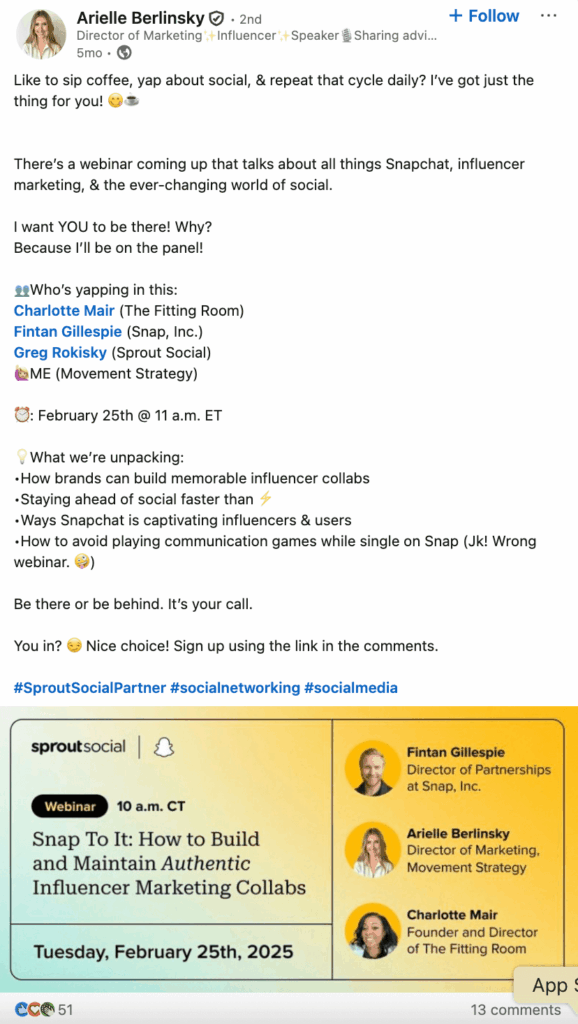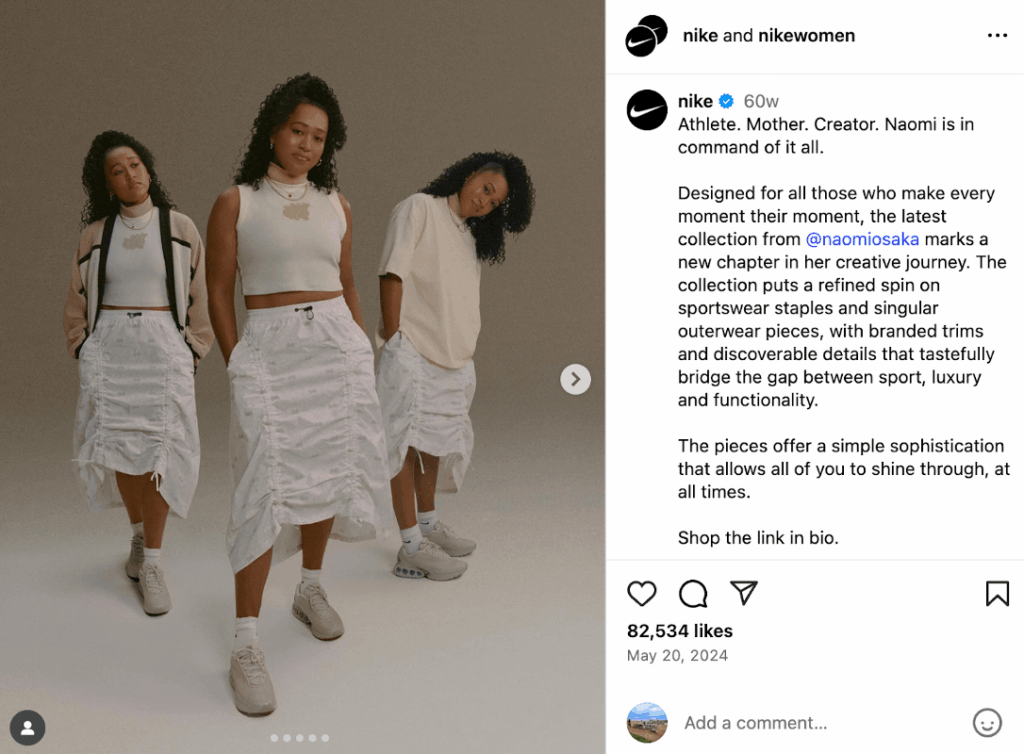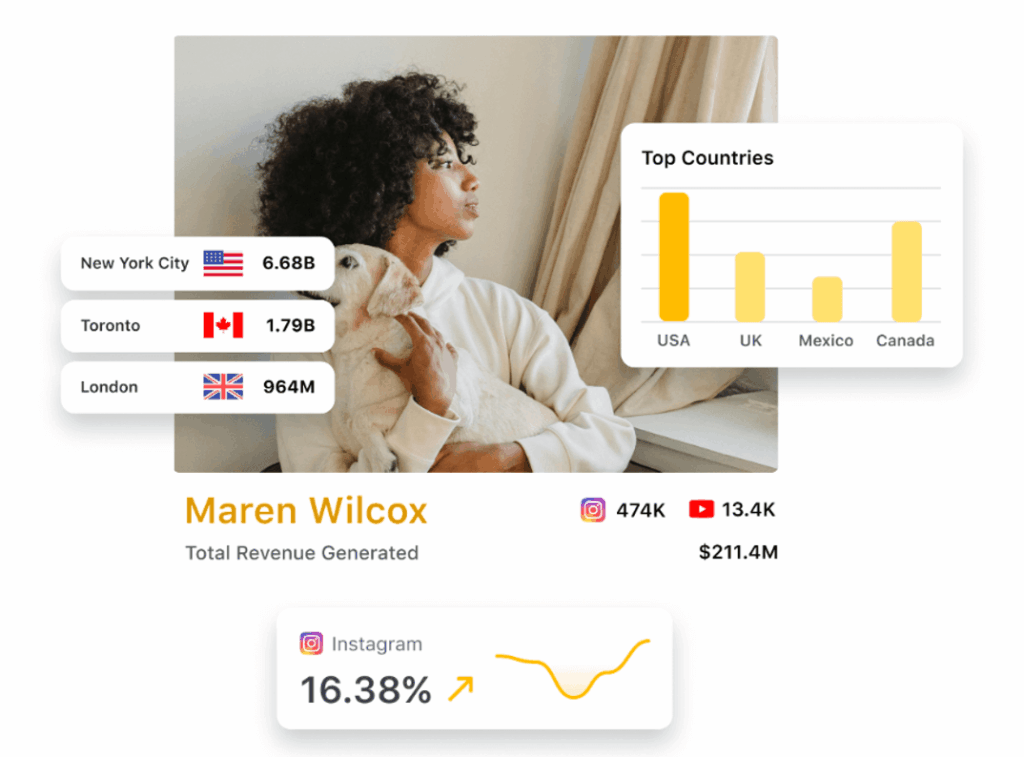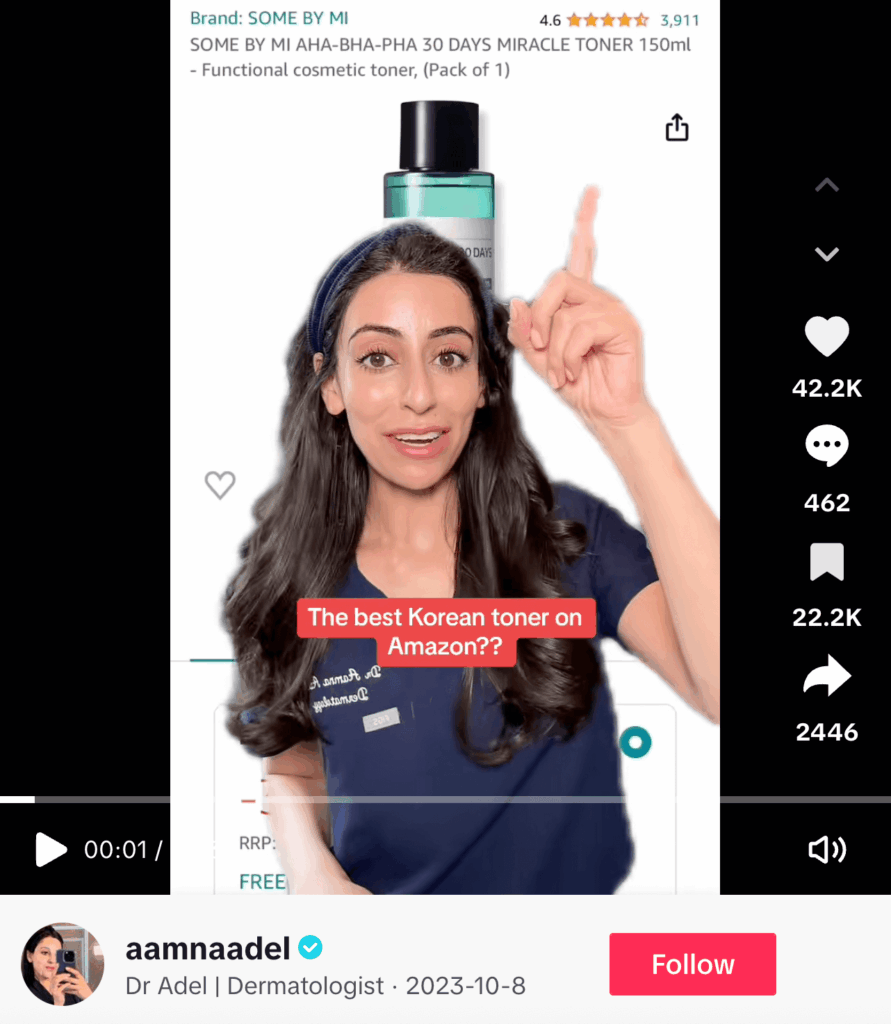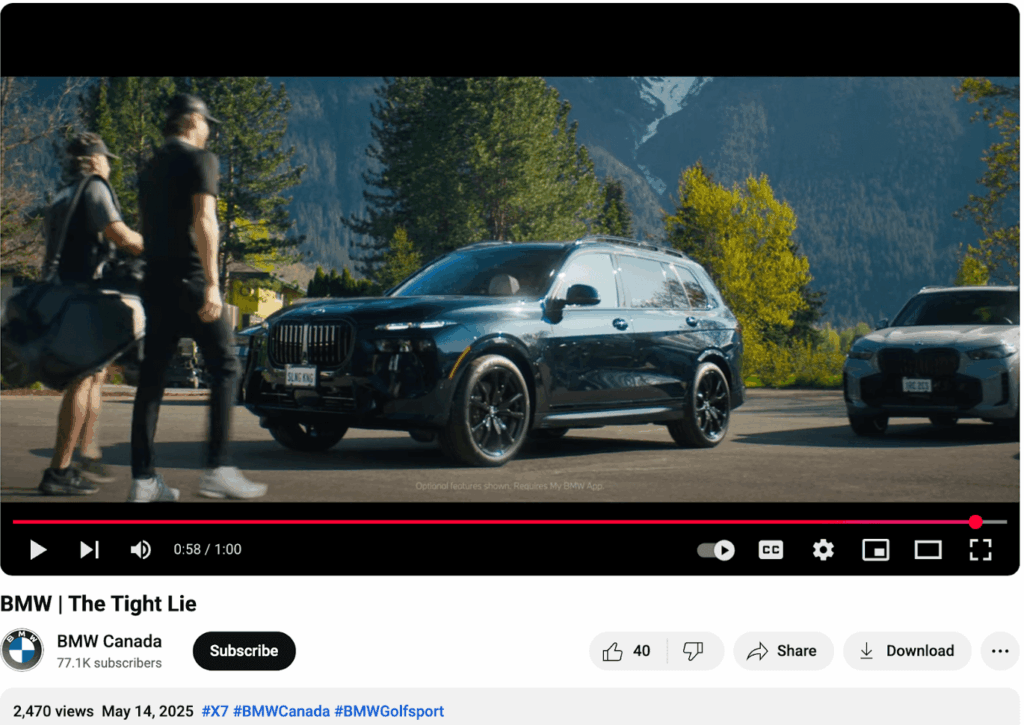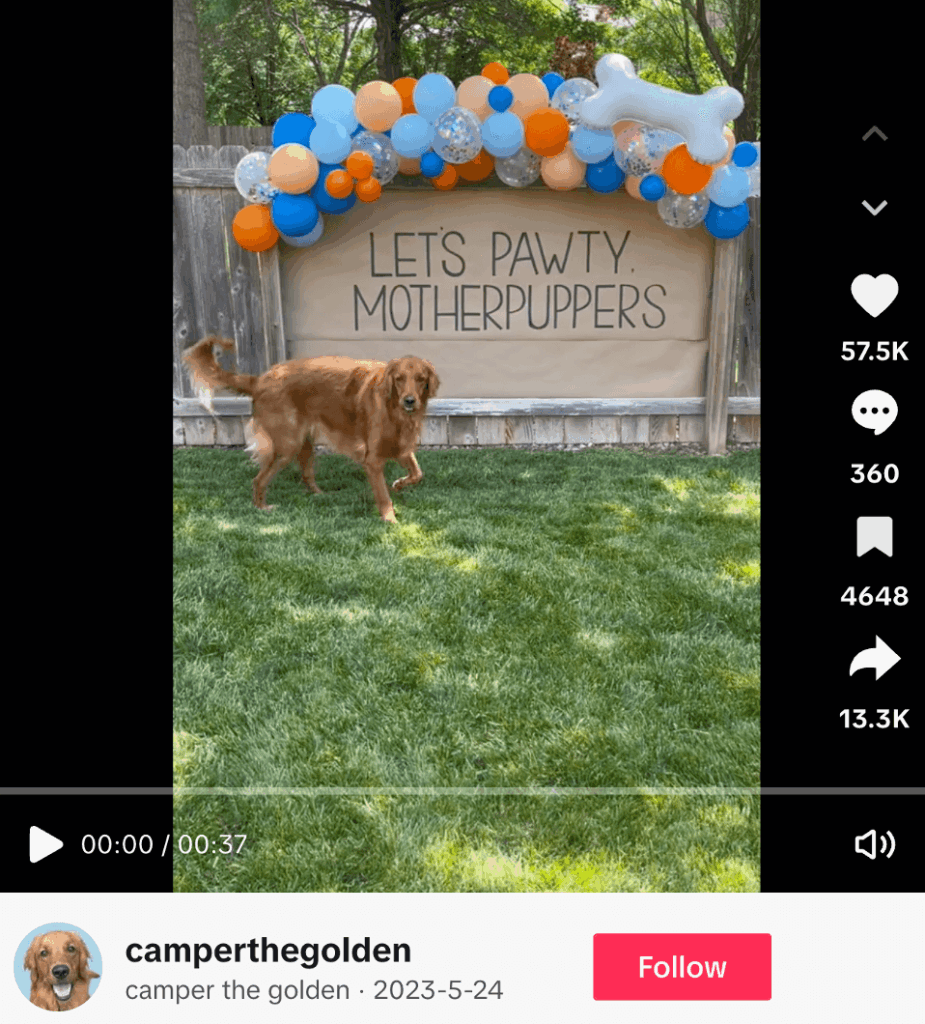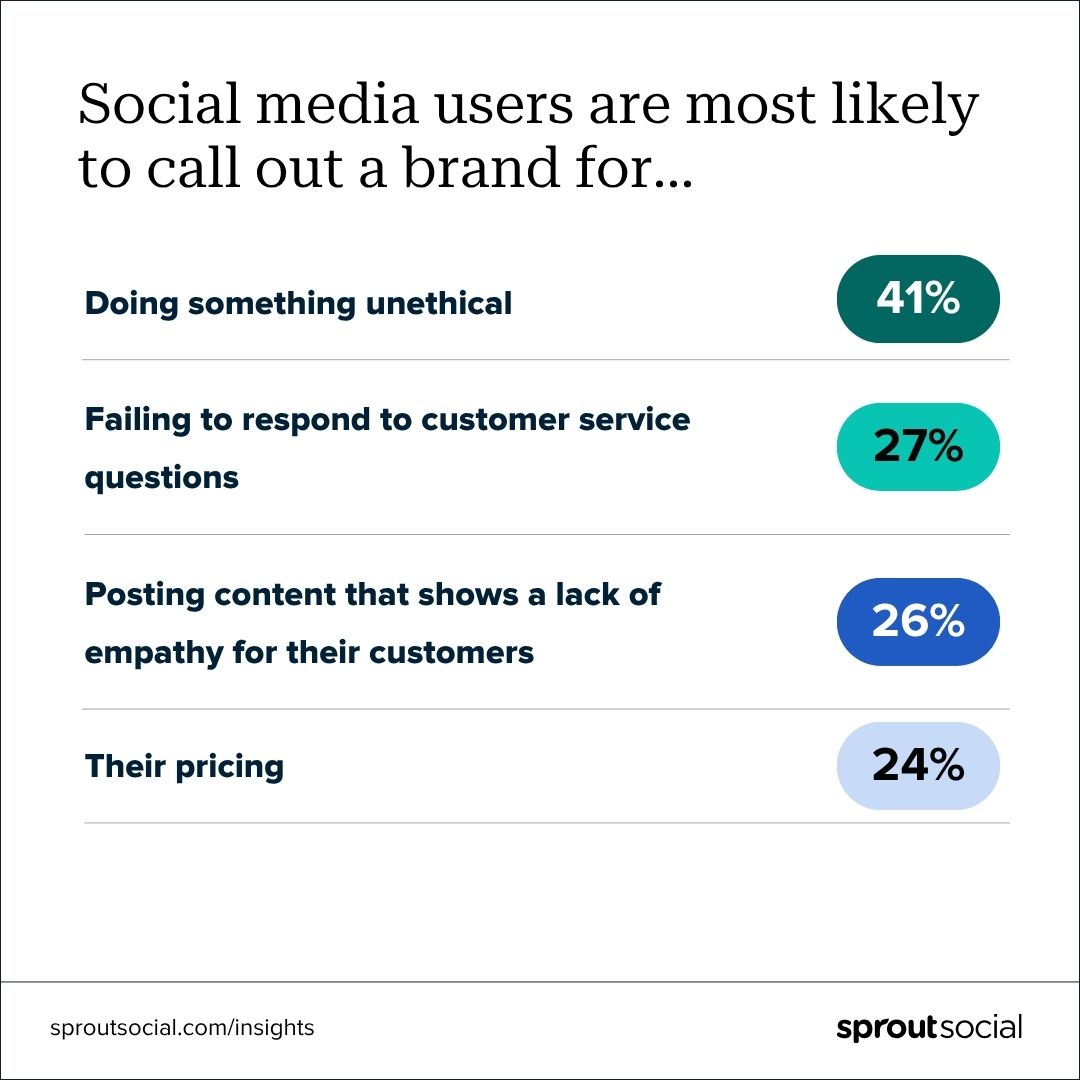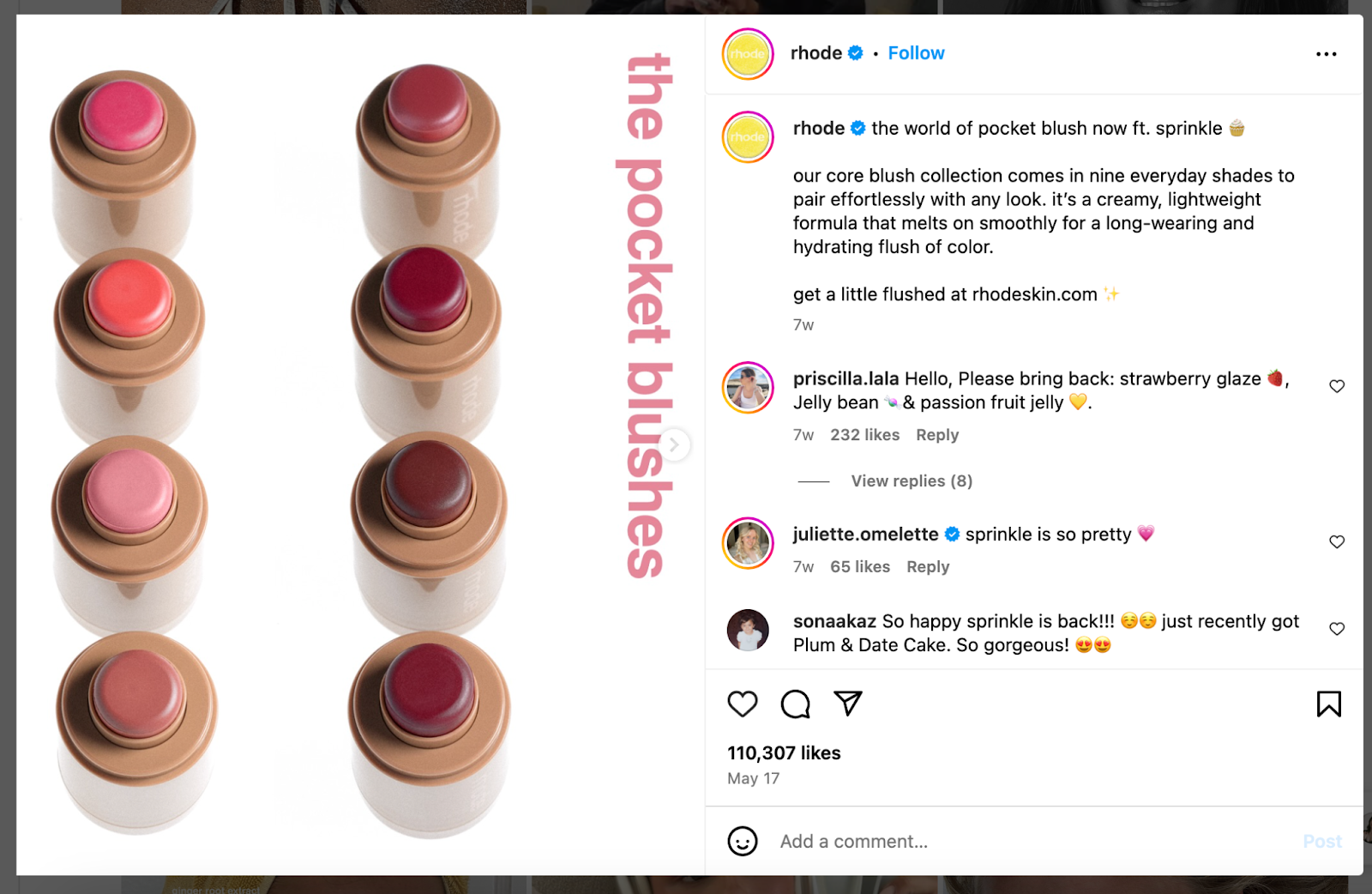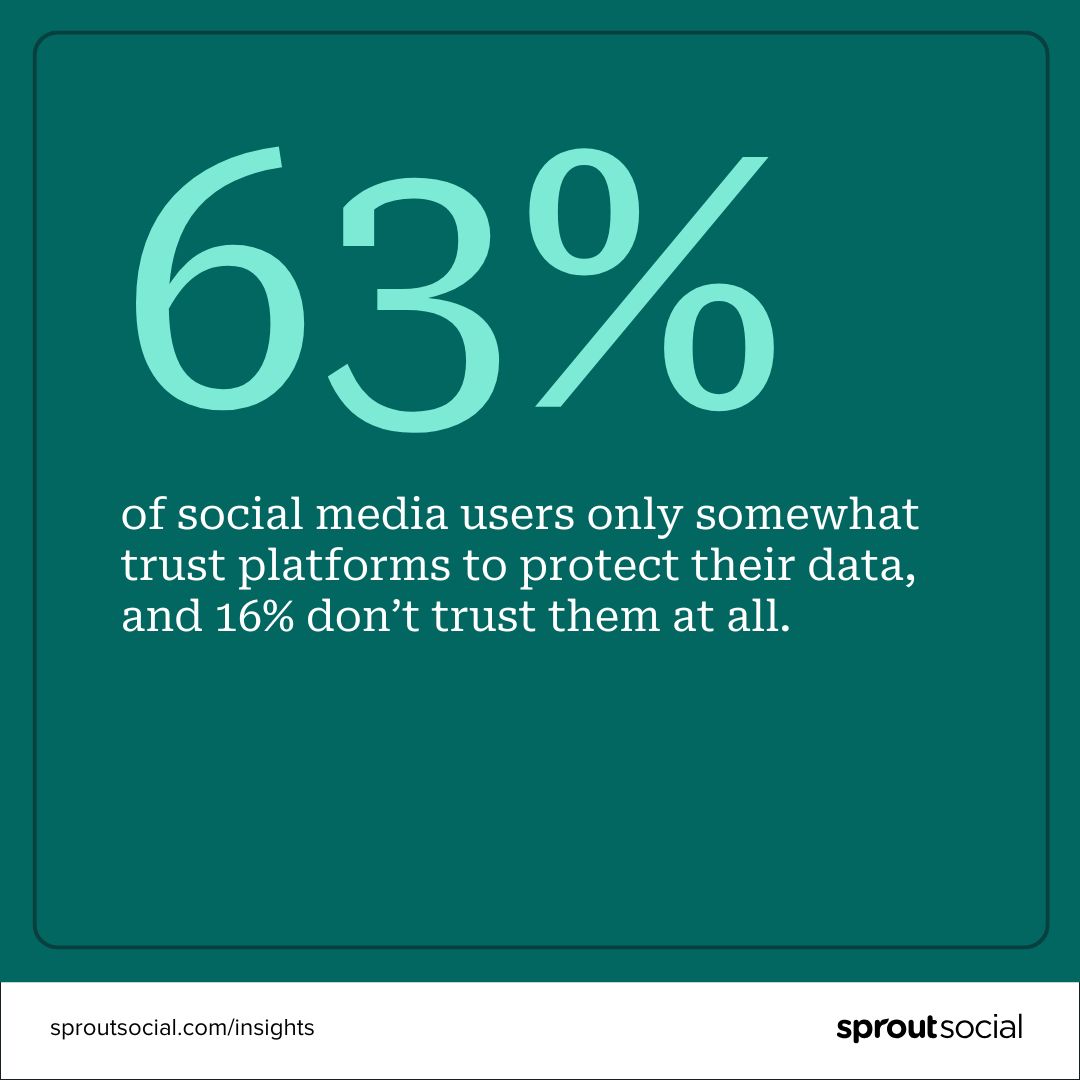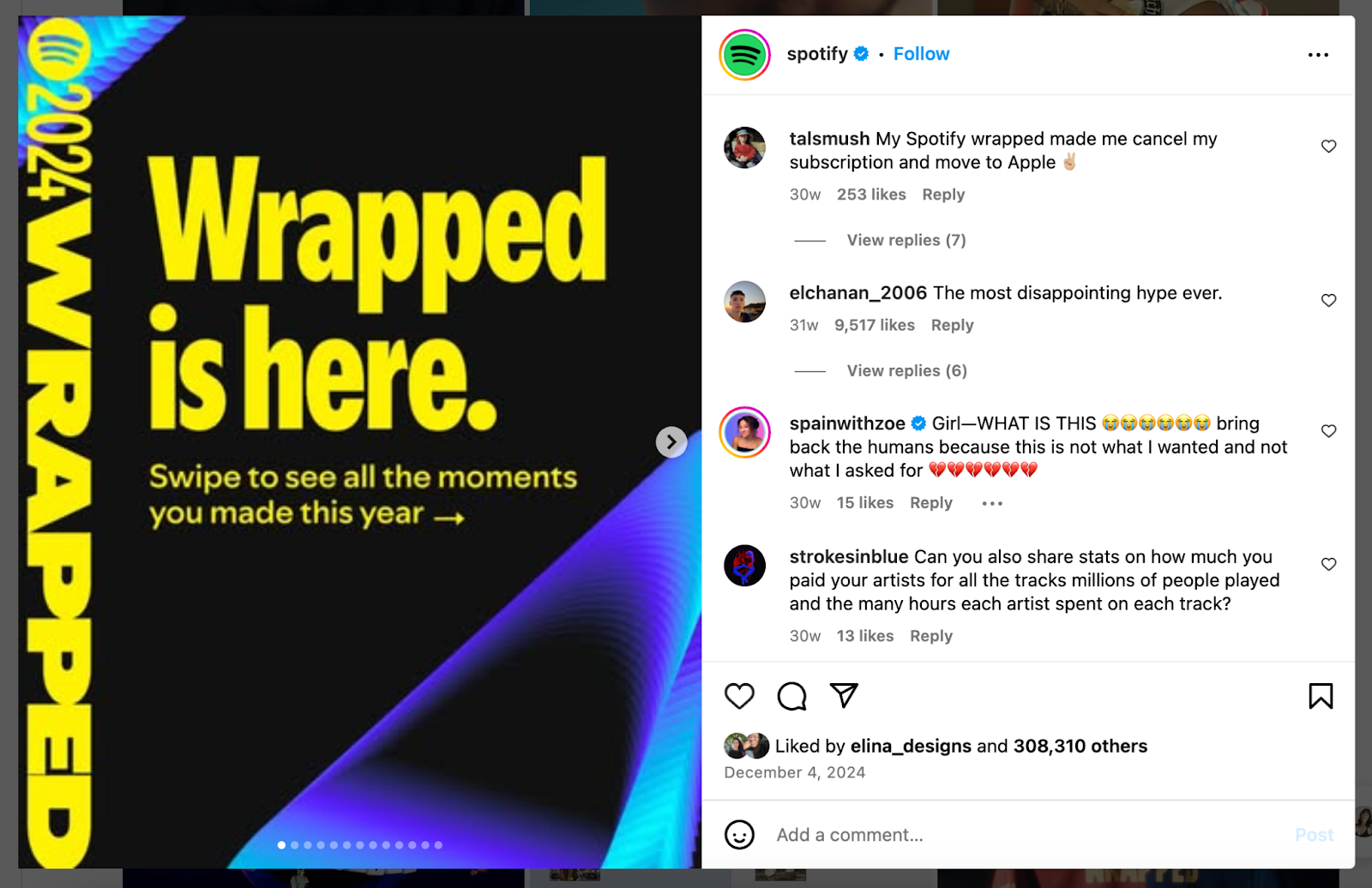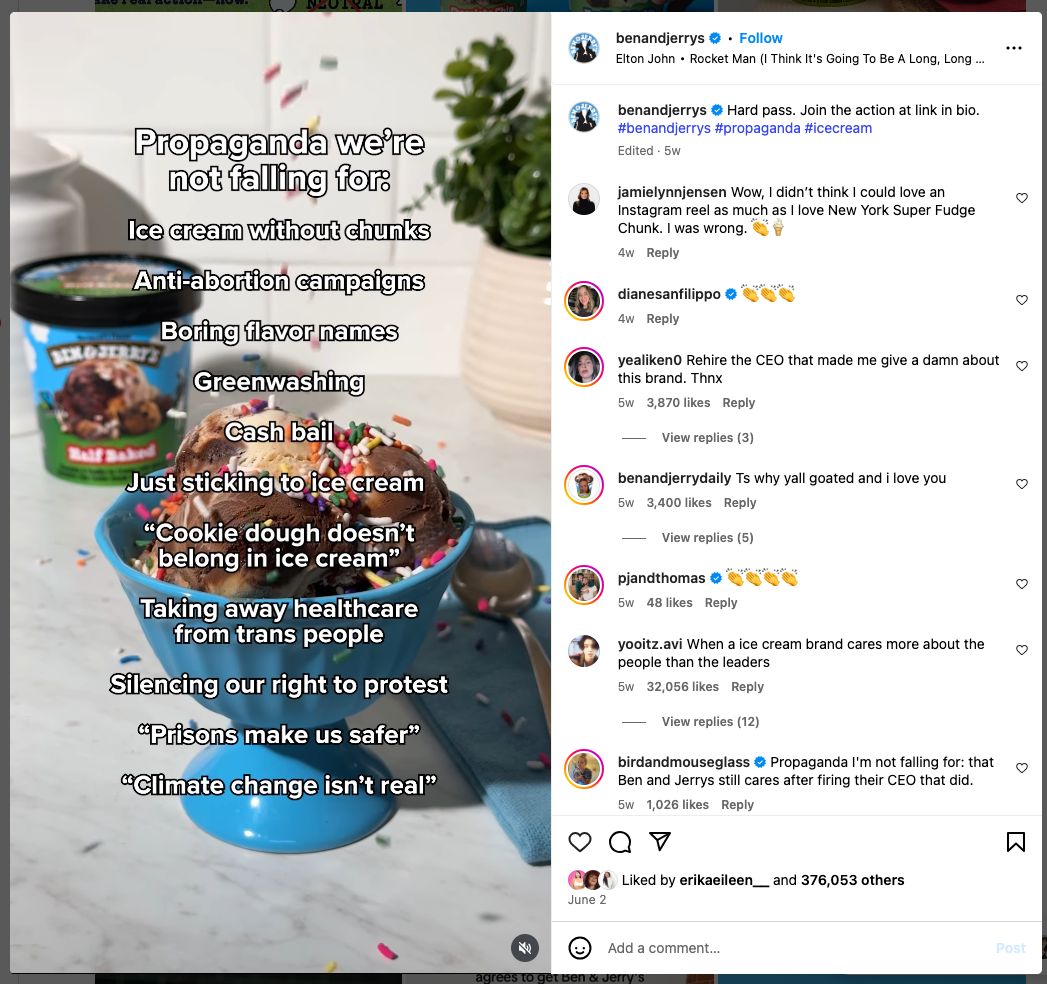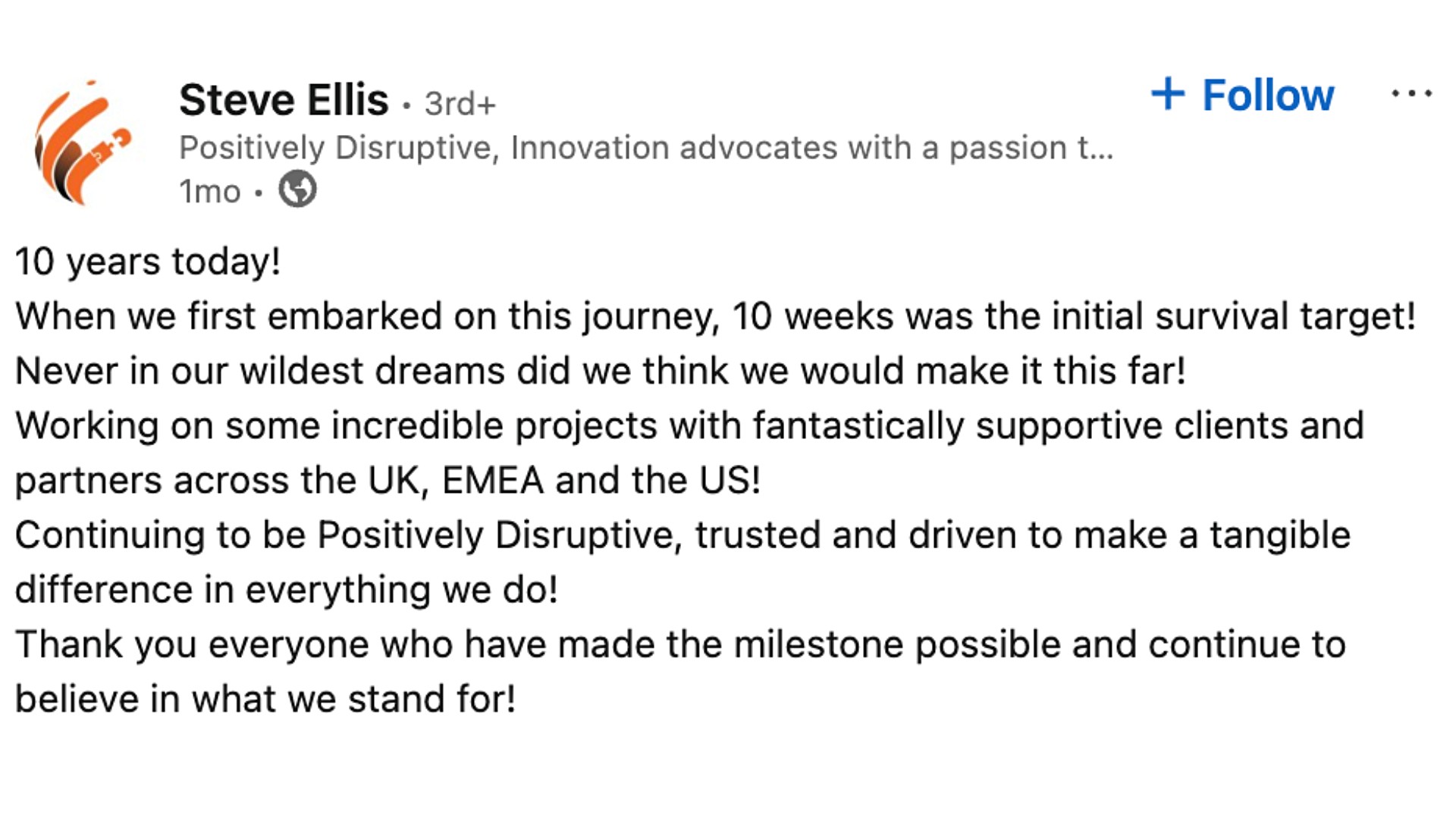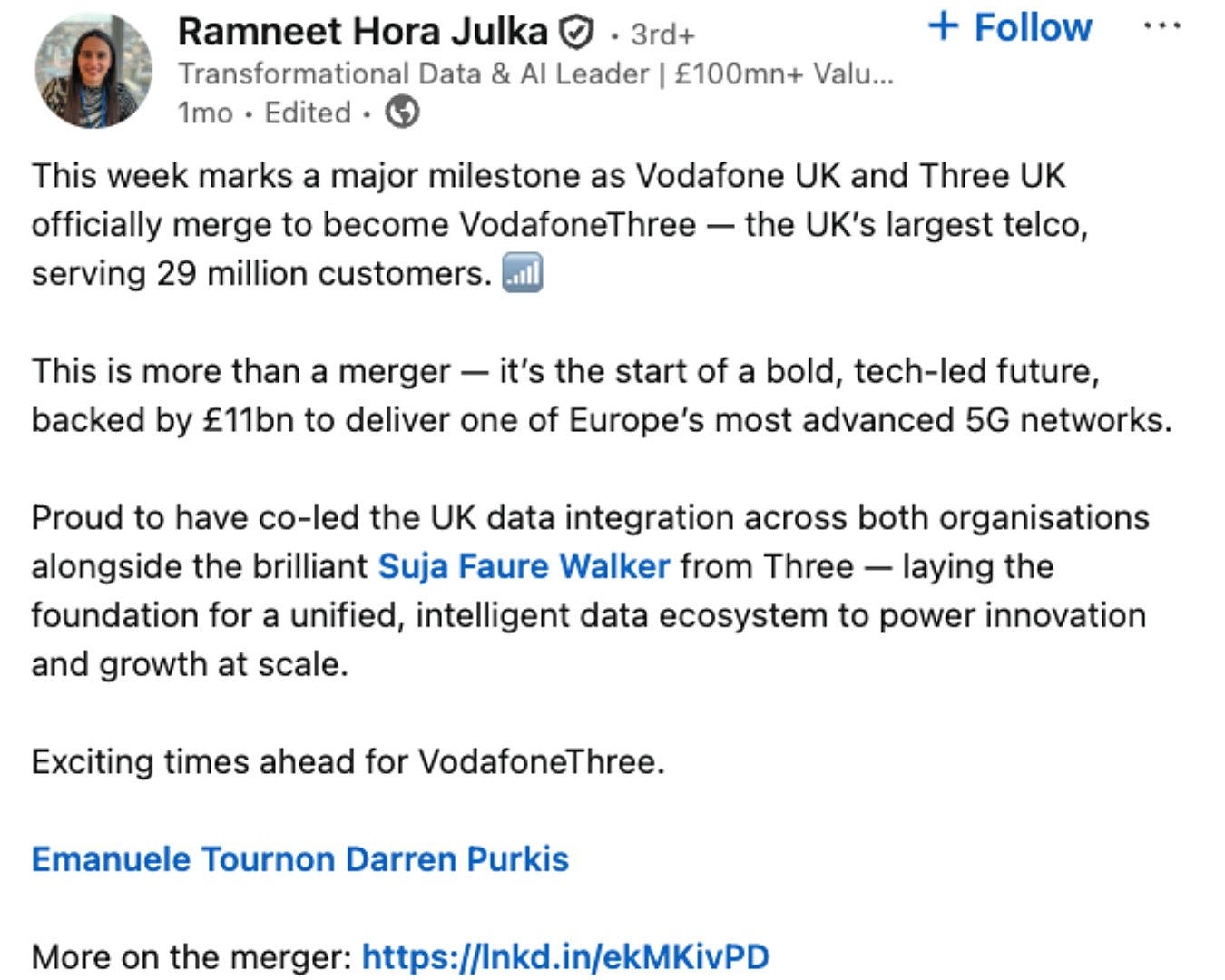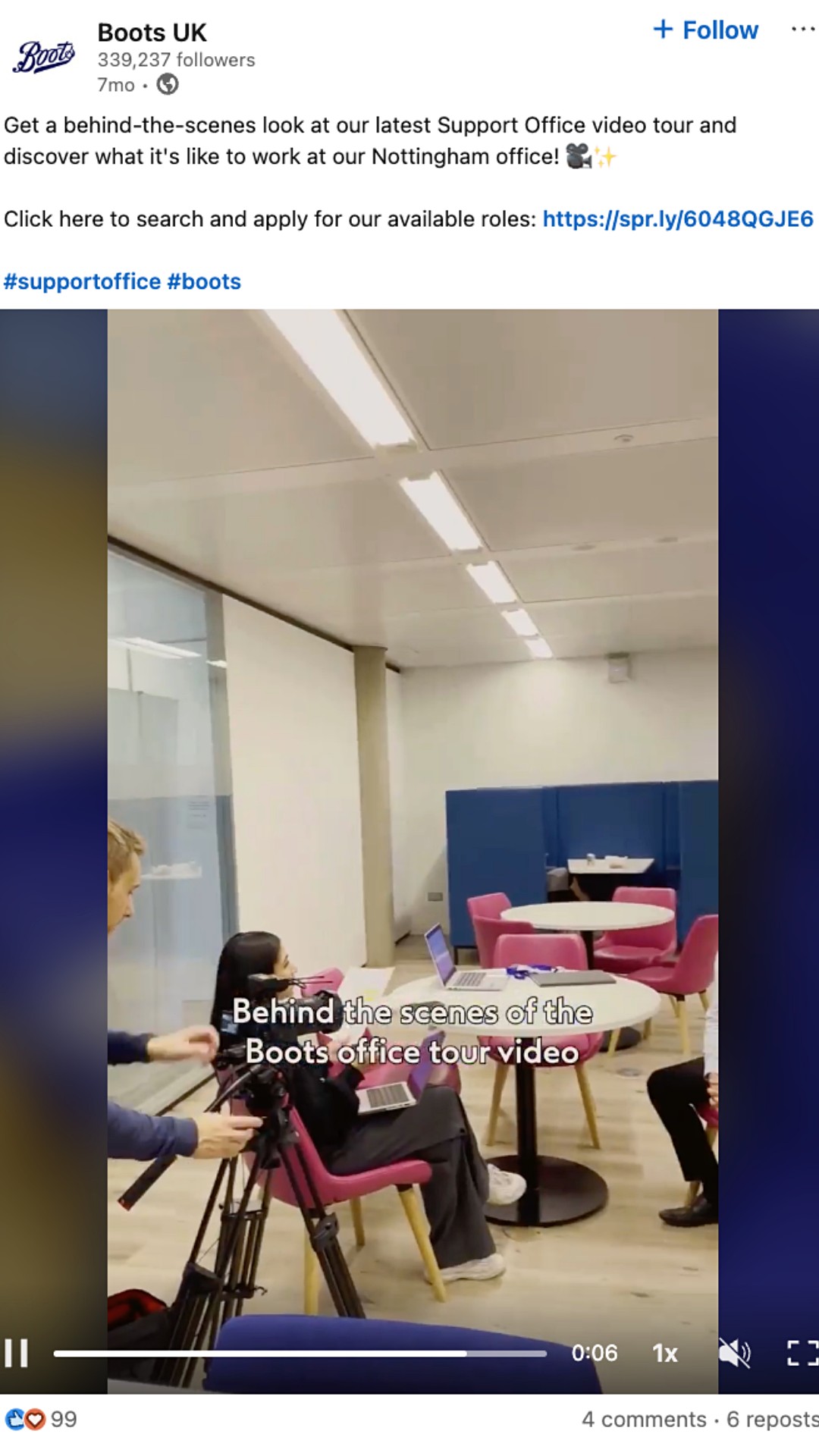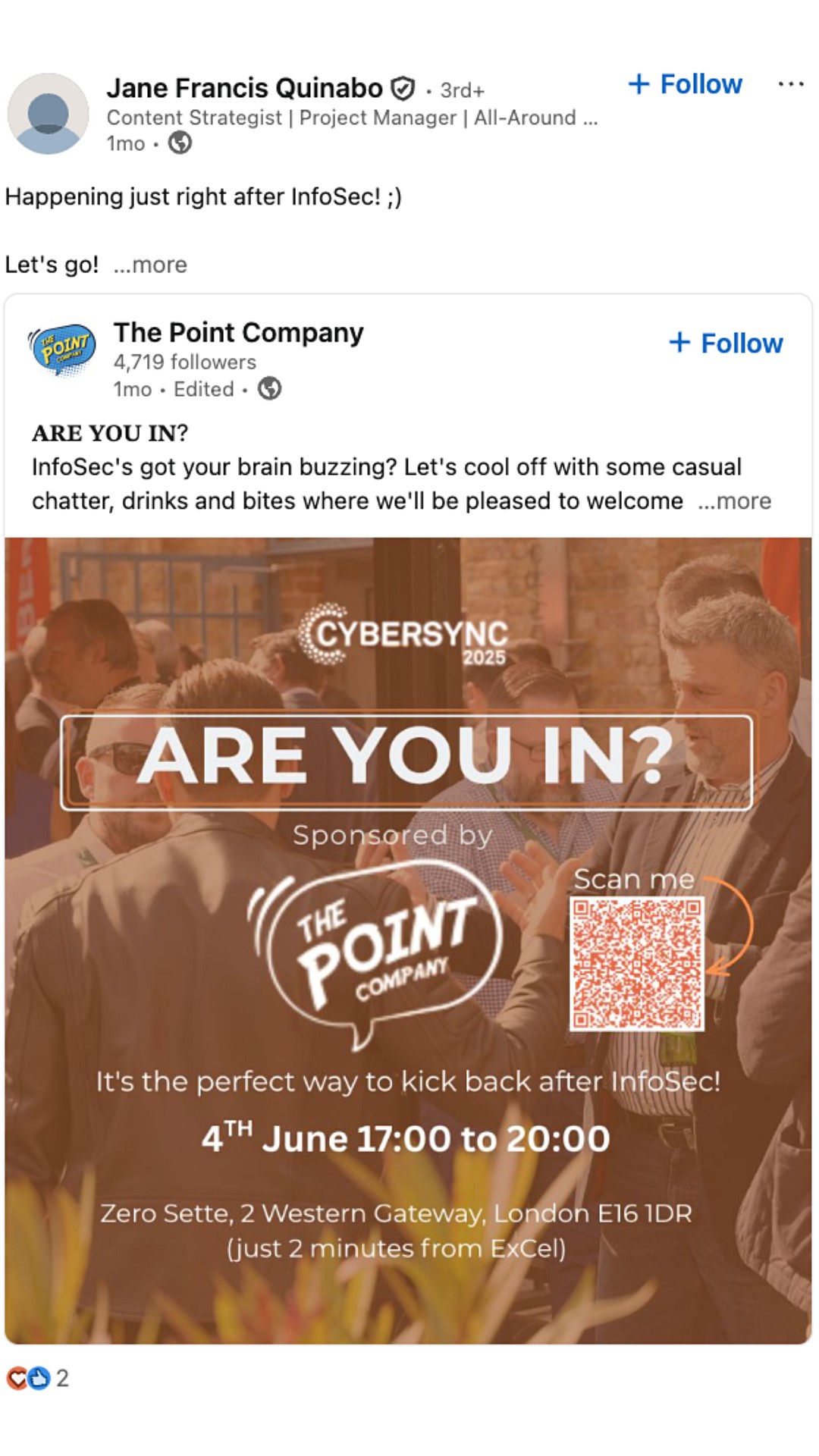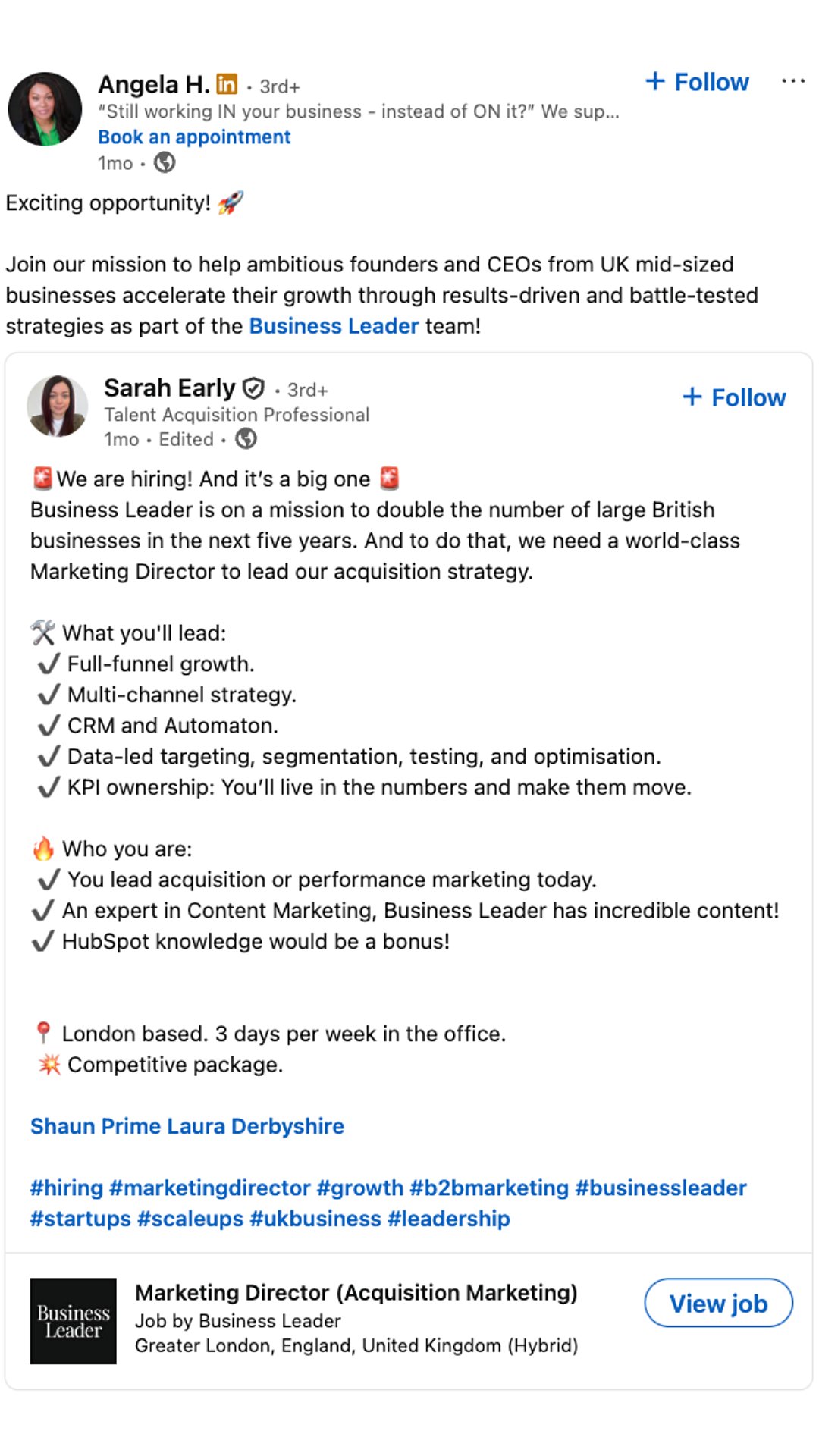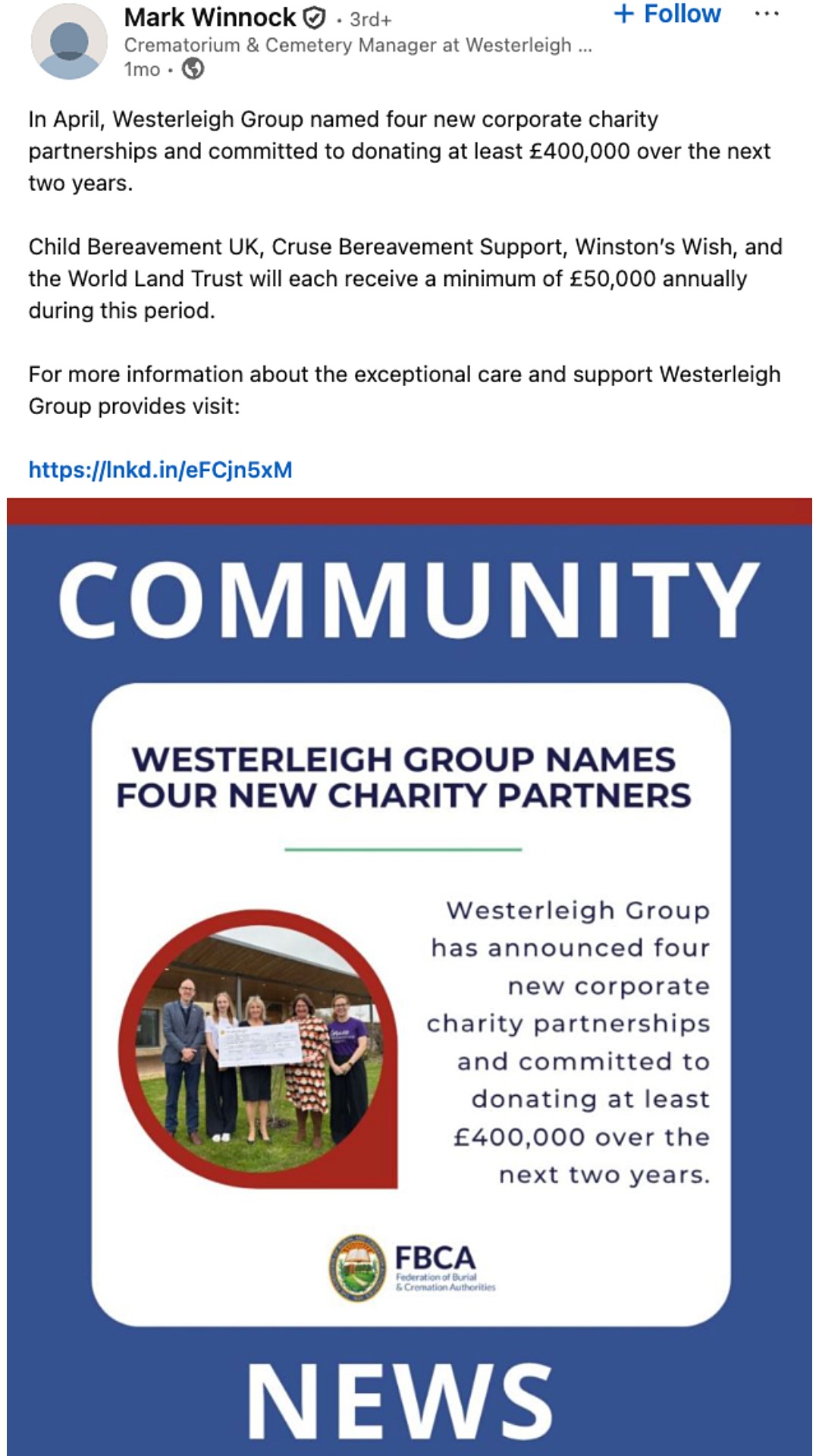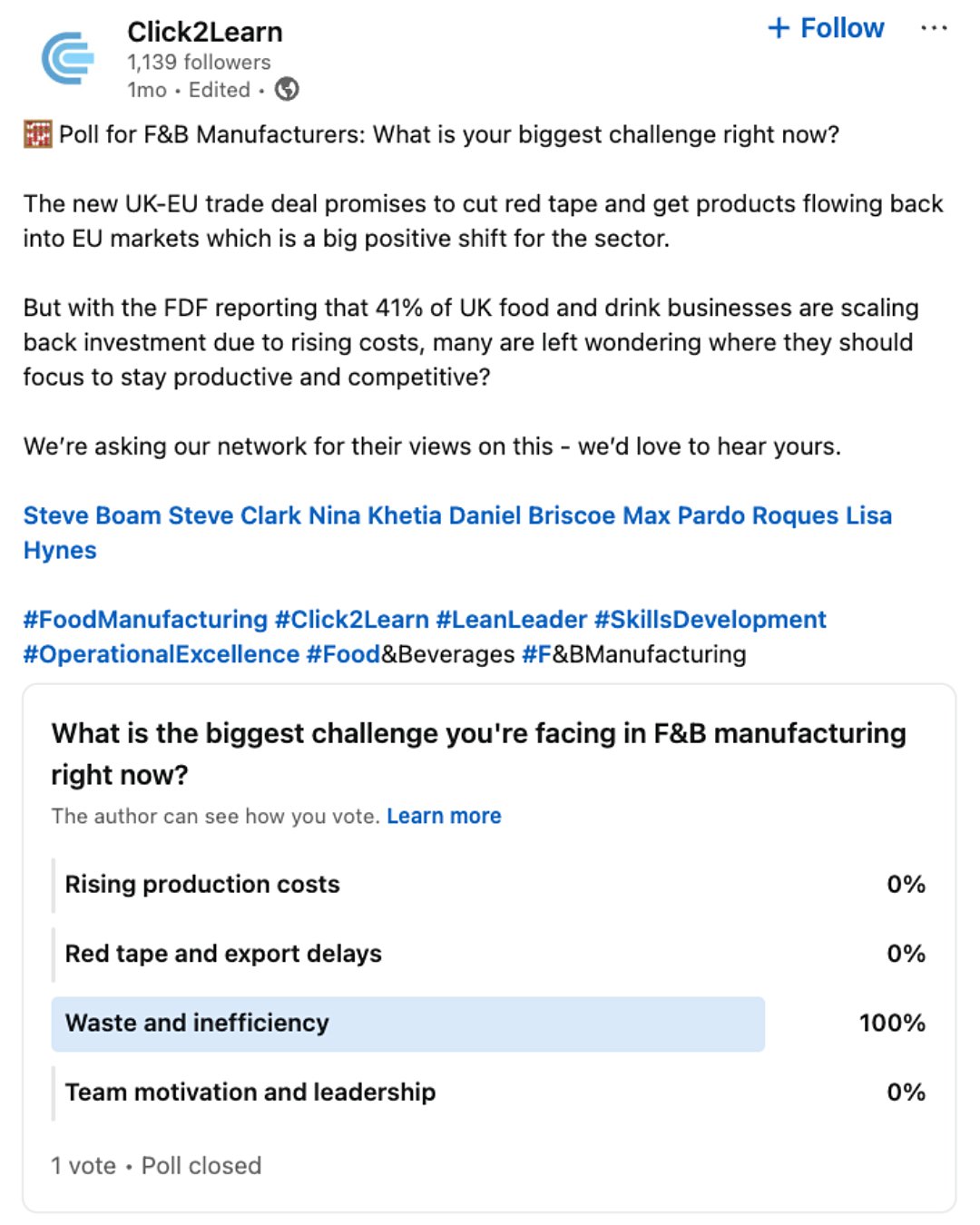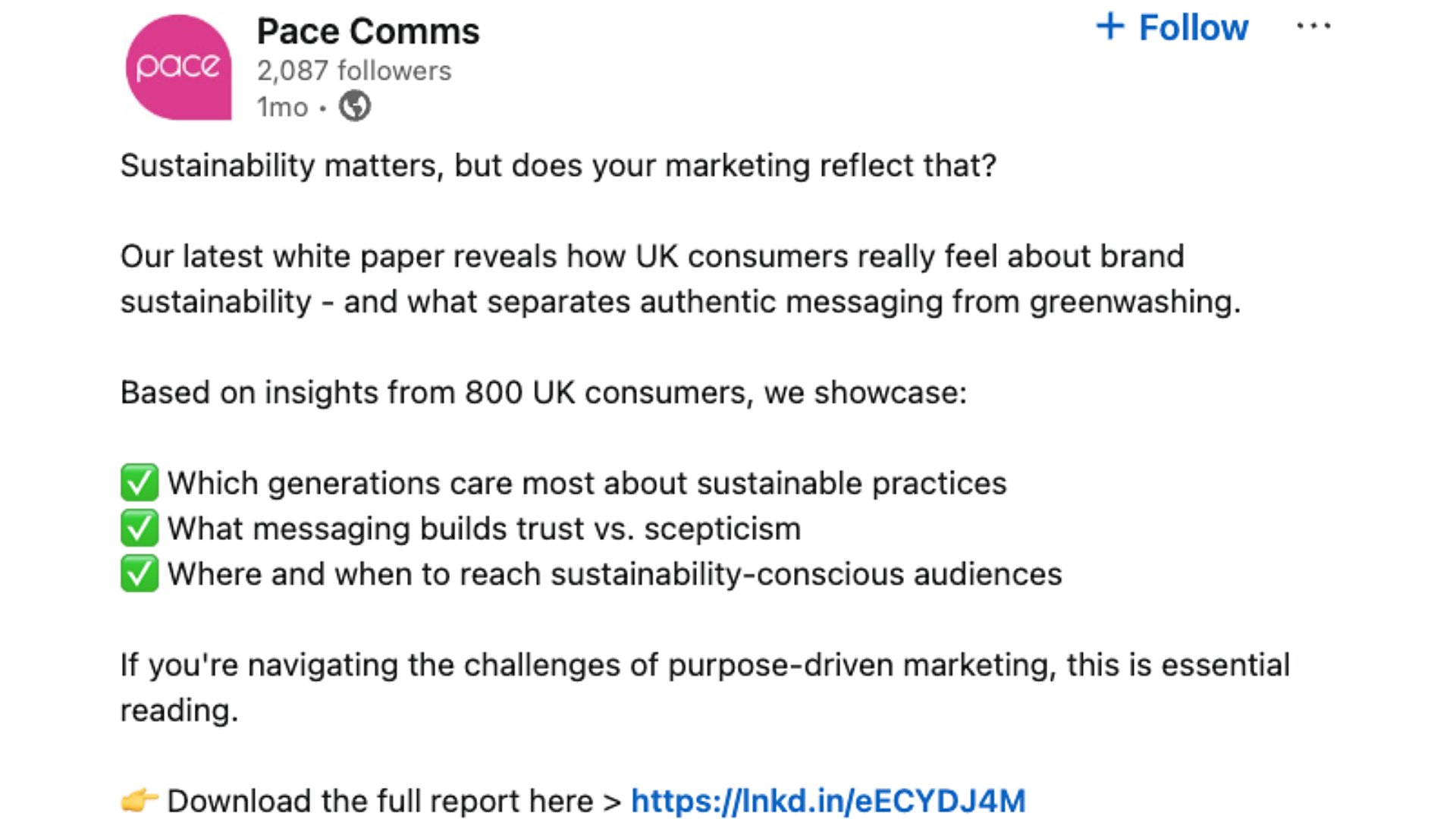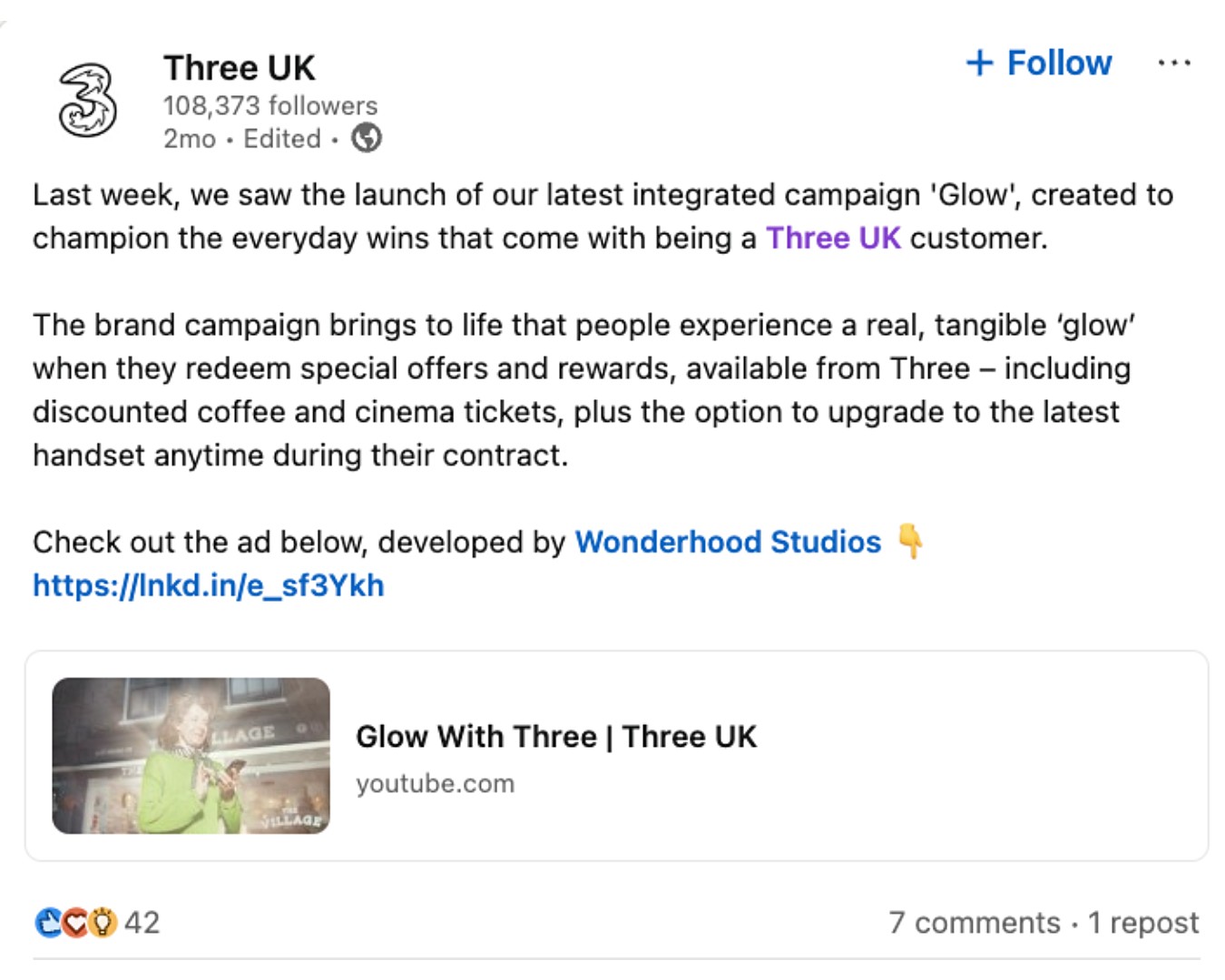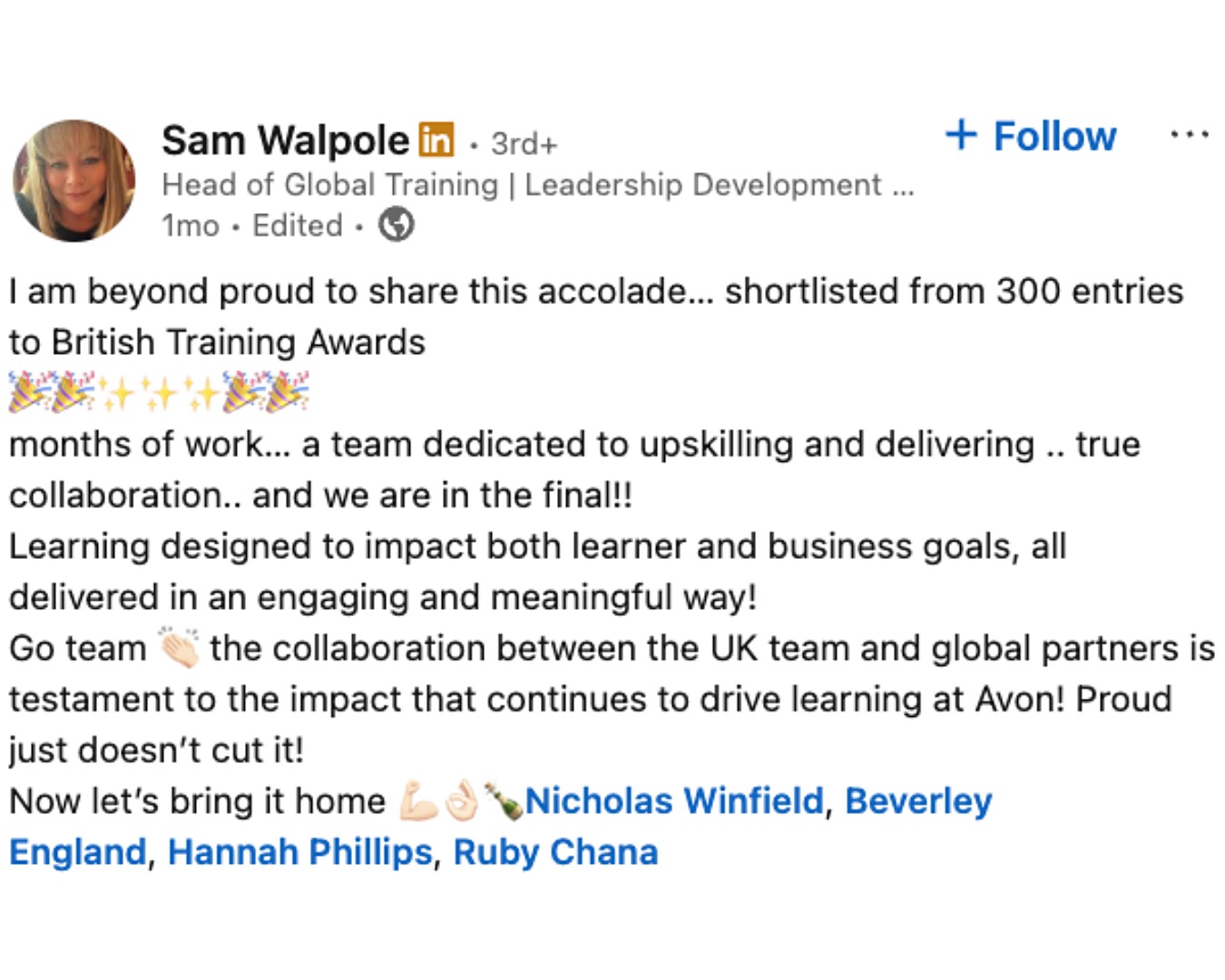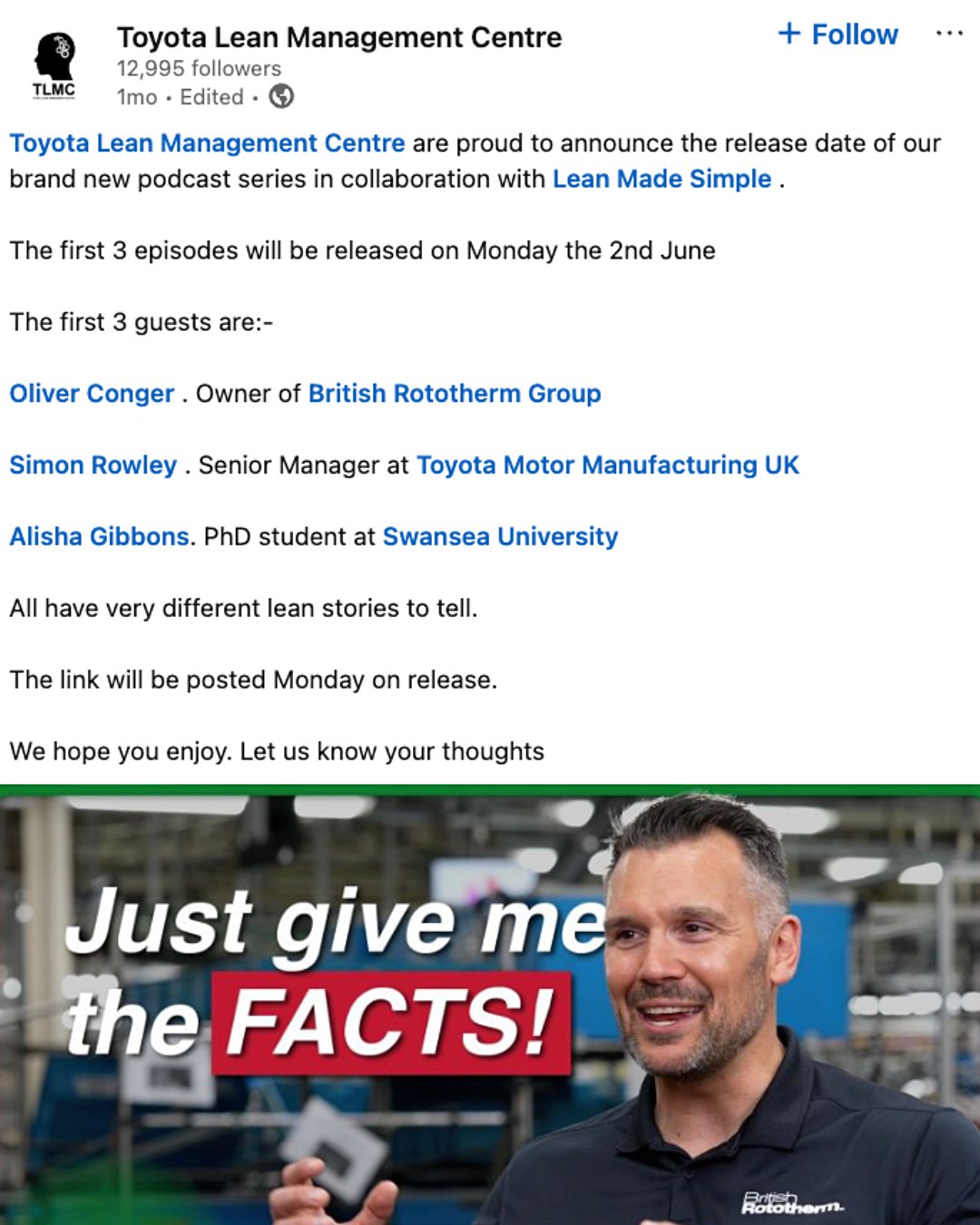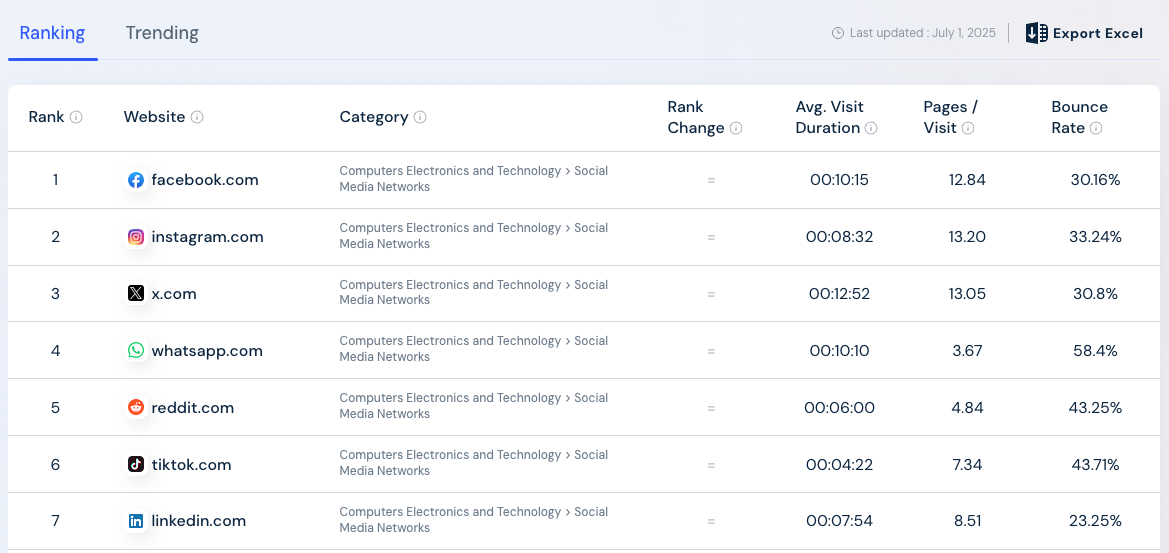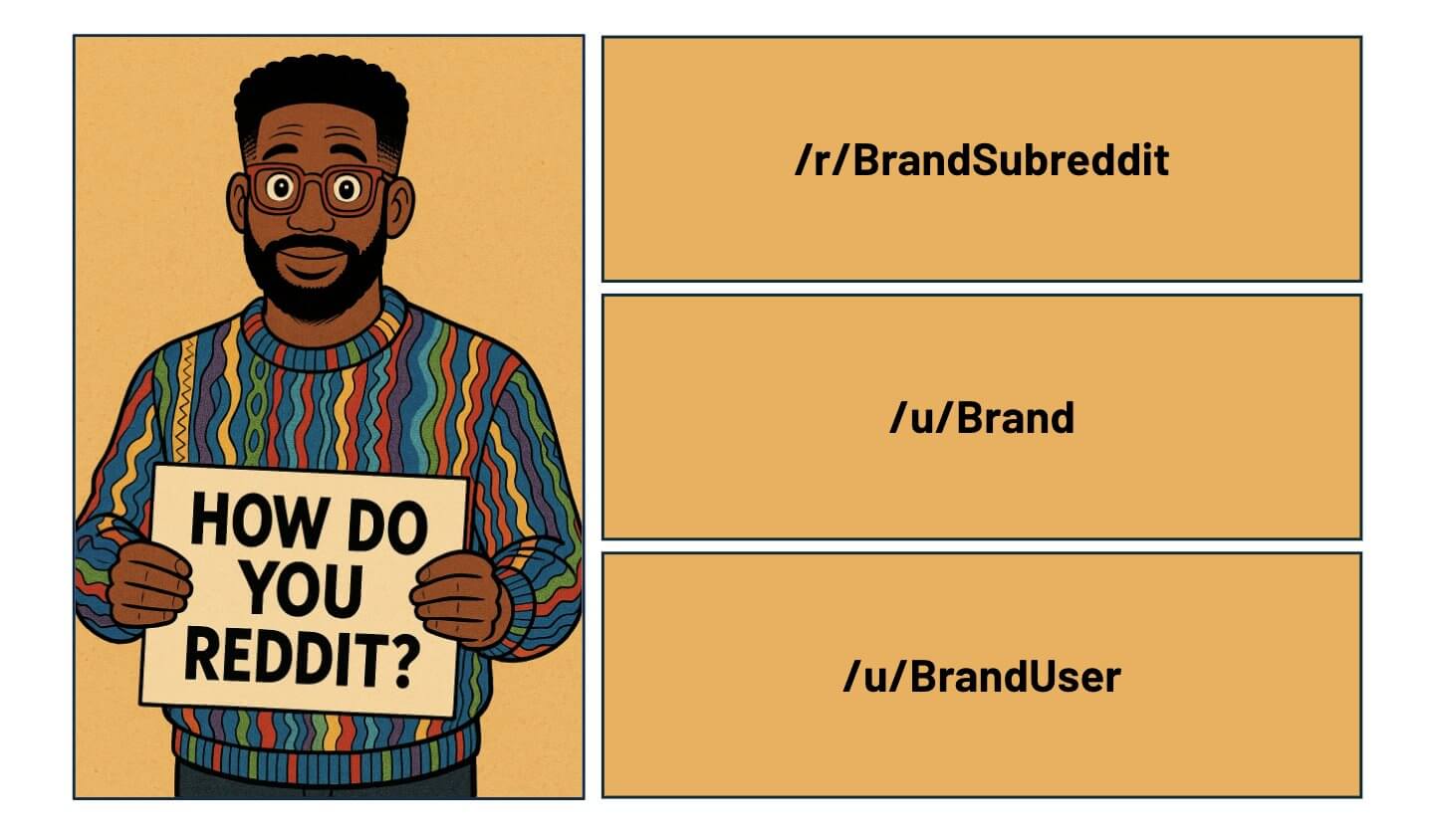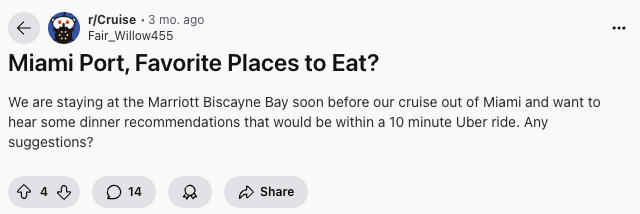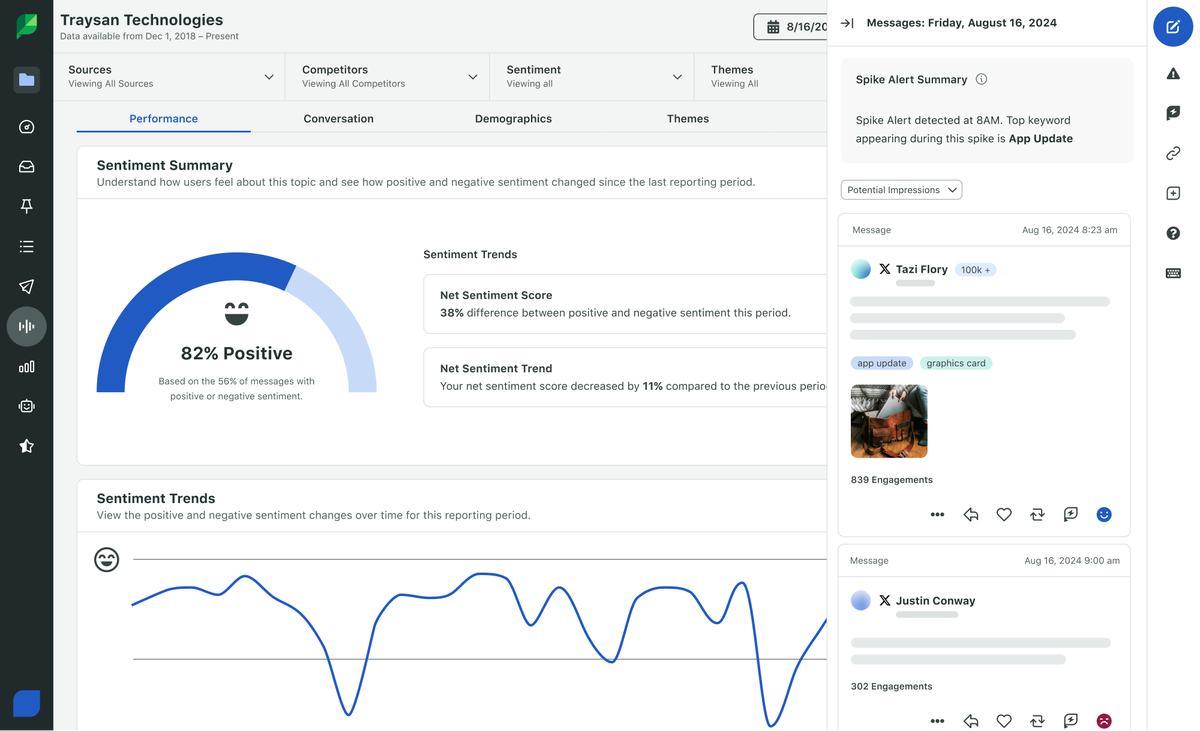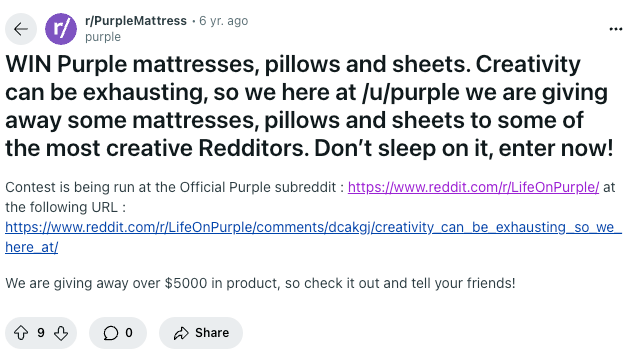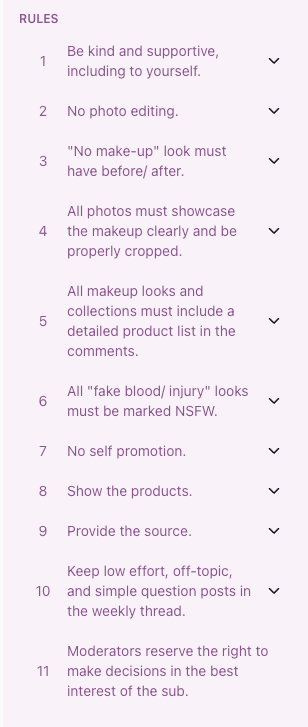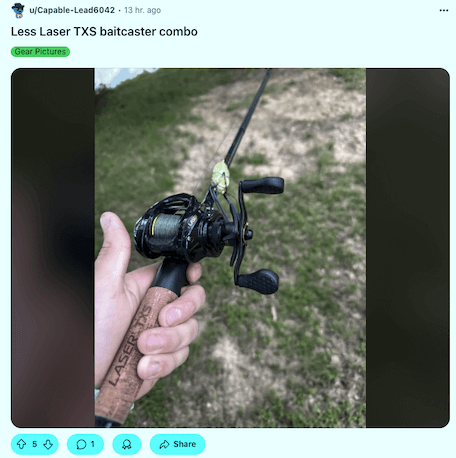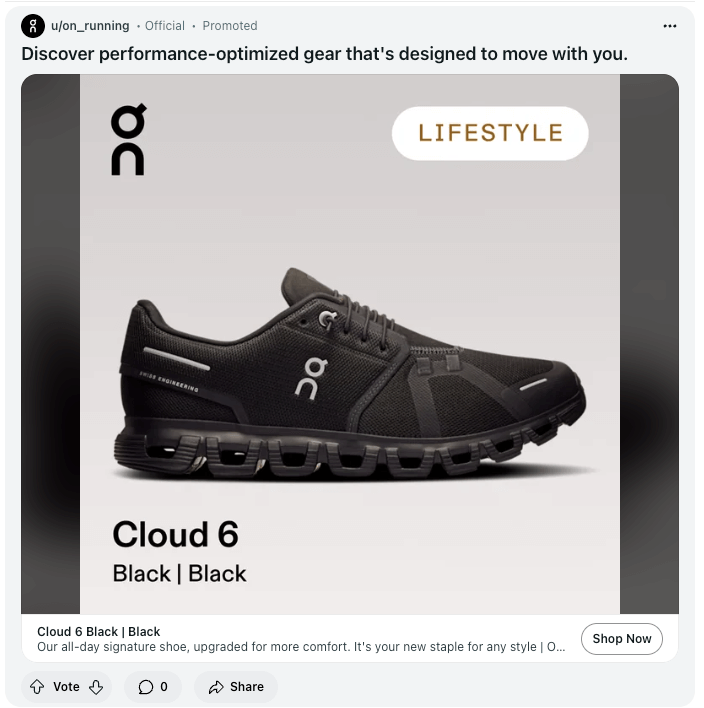TikTok is a fast-moving platform. Trends change almost as quickly as they spread. That’s why brands need to move quickly to make the most of prime engagement windows. The faster you engage your audience, the better your chances of maximizing reach on TikTok. One way to make that happen is by having a consistent posting schedule and posting at the right time.
That’s where TikTok scheduling can help. The platform offers a free scheduling feature, but it’s limited to desktop use only. But with social media scheduling tools like Sprout Social, you can easily schedule TikTok posts on both mobile and desktop.
This post breaks down everything you need to know about scheduling TikTok posts on desktop. We’ll also review how Sprout’s mobile scheduler will make scheduling and publishing even more convenient.
Can you schedule posts on TikTok?
The short answer is yes, but the native TikTok mobile app doesn’t offer scheduling tools. You need to use the Video Scheduler web app on desktop. In other words, you can schedule TikTok posts natively only from your desktop.
This option can be inconvenient for businesses with a high publishing frequency. For starters, you’ll need to open your laptop every time you need to schedule your TikTok posts. Besides, you can only schedule posts up to 10 days in advance. So you won’t be able to plan your content far ahead of time.
That said, businesses with a smaller publishing frequency might still benefit from it. It’s also a cost-effective option for those who need free TikTok scheduling.
Using a third-party tool like Sprout lets you bypass these limitations. This lets you schedule TikTok posts from either desktop or mobile—whichever is most convenient. And you can schedule them weeks or even months in advance. So it’s much easier to get a holistic view of your TikTok content strategy and align it with your cross-platform efforts.
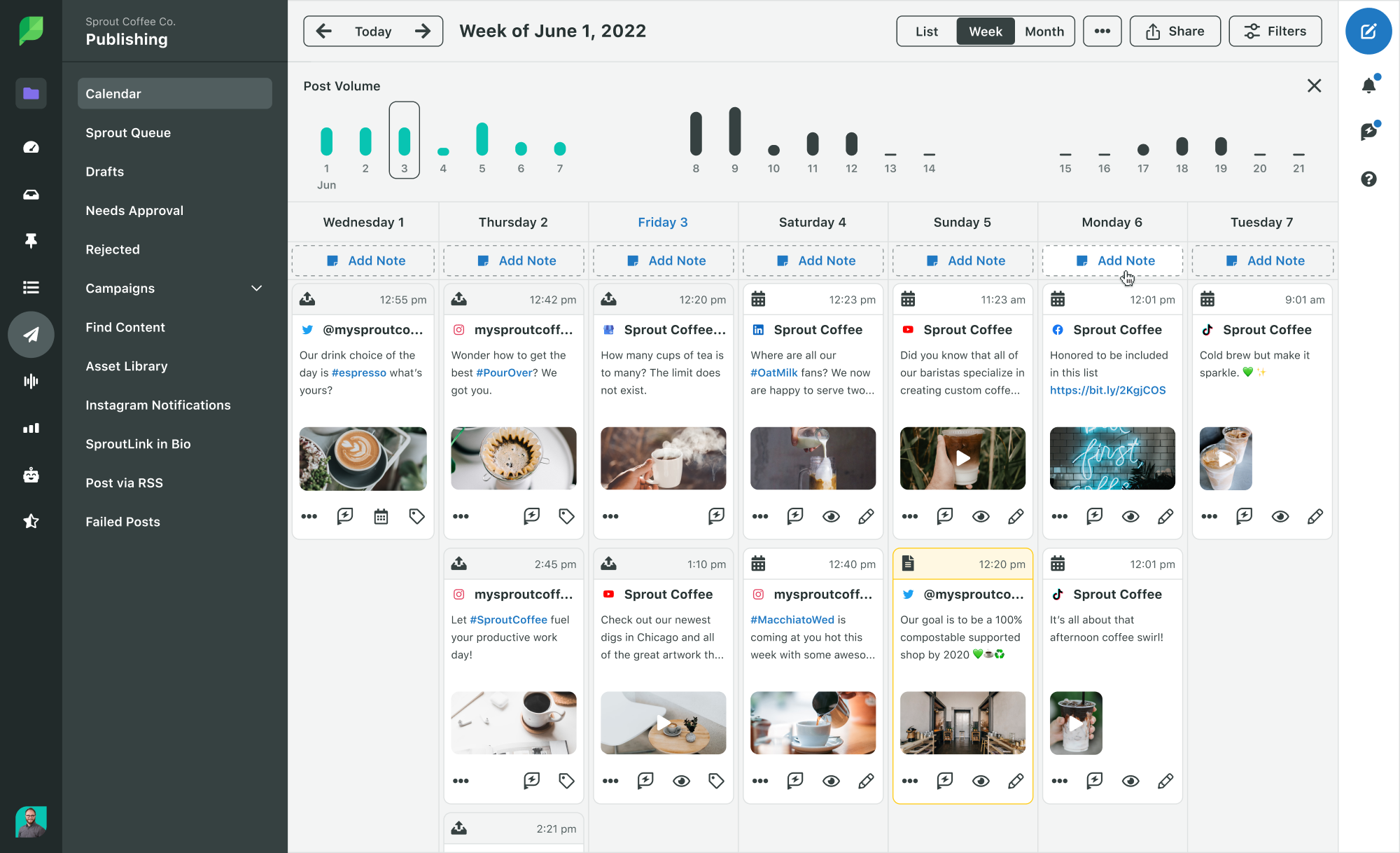
Schedule your TikTok posts for free with a 30-day trial.
How to schedule TikTok posts with TikTok’s Video Scheduler (desktop only)
Here’s how you can schedule TikTok content natively with the Video Scheduler:
Step 1: Log into TikTok on a web browser
The scheduler is only available on desktop, so have your computer handy. Log in and click the cloud icon in the top right corner. Note that you need a TikTok Business Account to use this scheduler.
Pro tip: Be sure to do your research on TikTok marketing best practices before you start exploring the scheduler. Understanding the fundamentals of marketing on the app will set you up for scheduling TikTok for higher impact results.
Step 2: Upload and prep your post
In the upload video window, you can do everything you normally do before publishing. Add captions, TikTok hashtags, mentions, choose a cover image, run a copyright check and pick your settings.
Step 3: Schedule TikTok posts
Once a video is scheduled, you can’t make edits. So do a thorough typo and settings check before hitting schedule. When you’re ready, click the toggle next to Schedule Video so it turns green. Two boxes will appear where you can set your publishing date and time. The time zone defaults to your computer’s, so double-check your settings.
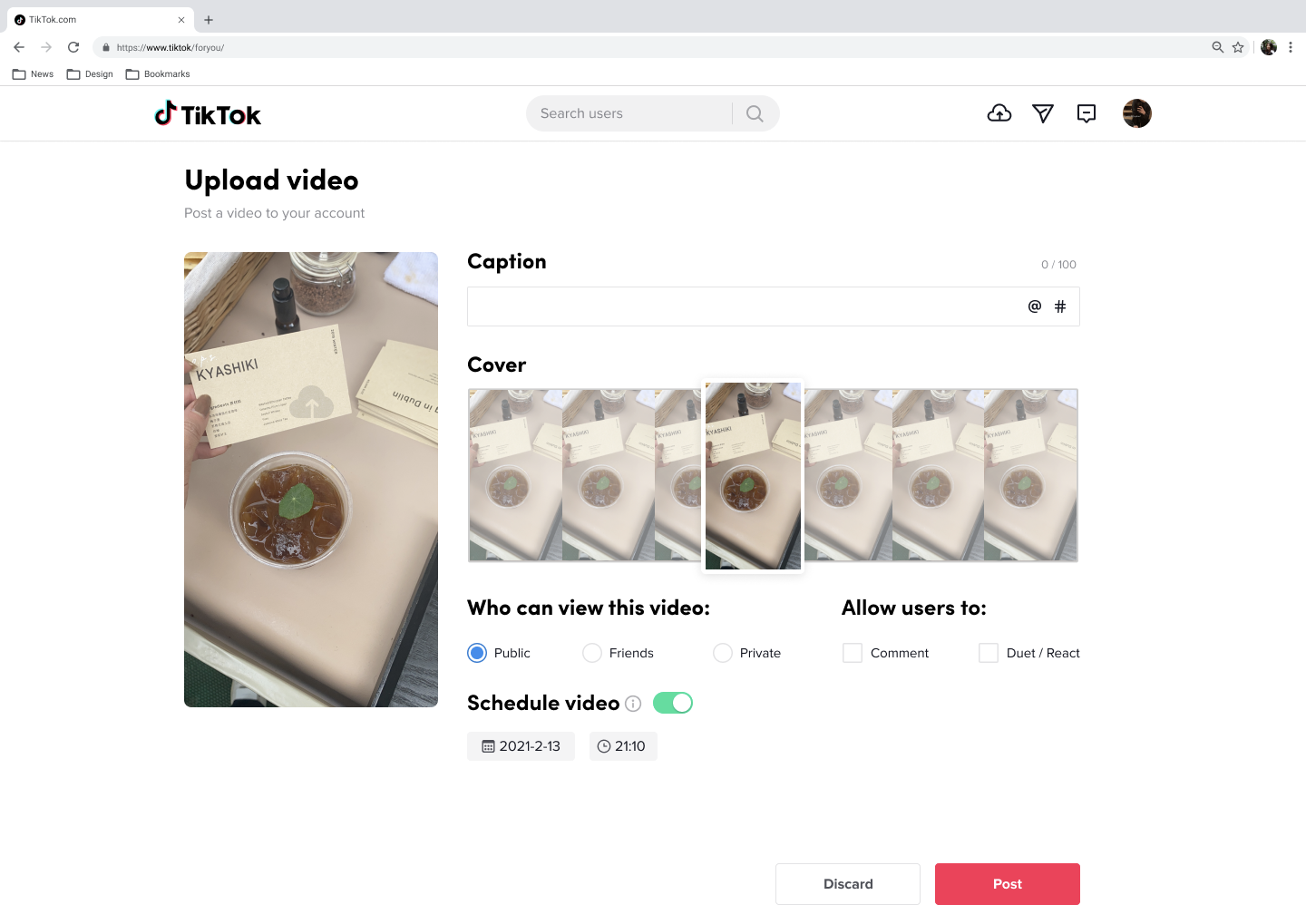
Source: TikTok
Step 4: Do a quick double check
Mistakes happen. Cut out Murphy’s law and make sure your content is scheduled at the right time. Find scheduled posts in the Drafts section of your Profile.
Once you click Schedule, sit back and relax—your TikTok posting schedule has officially been created.
You’ll get a push notification when your post goes live, as long as you’ve enabled notifications.
How to schedule TikTok posts on mobile
Relying only on desktop publishing can be inconvenient for those who prefer using mobile devices or need to schedule posts while on the go. But with Sprout Social, you can schedule TikTok videos directly from your mobile device.
This flexibility means you can plan and maintain your TikTok content schedule from anywhere. So you never miss opportunities to engage with your audience. The ability to create and schedule TikTok videos from the same device is also an easy way to streamline your marketing workflow.
Below, we break down the steps on how to schedule a TikTok post on a mobile device using Sprout.
Step 1: Log into Sprout on your web browser and start composing your post
Begin by logging into Sprout Social on your favorite web browser on your desktop.
Tap the blue notepad and pencil icon in the top right corner to compose your post. You can also select Publishing on the left side bar and click on the day you want to post.
Pro tip: Use the weekly or monthly calendar to get a birds-eye view of scheduled posts across your platforms and accounts. This will prevent inconsistent scheduling or accidentally publishing overlapping posts.
Step 2: Choose the TikTok account you want to schedule a post on
You might be juggling several TikTok accounts if you work in social media marketing. Sprout makes it easy to oversee multiple accounts from a single location.
When you navigate to the New Post window, you’ll find a dropdown menu in the compose box. From here, simply choose the account you wish to post on.
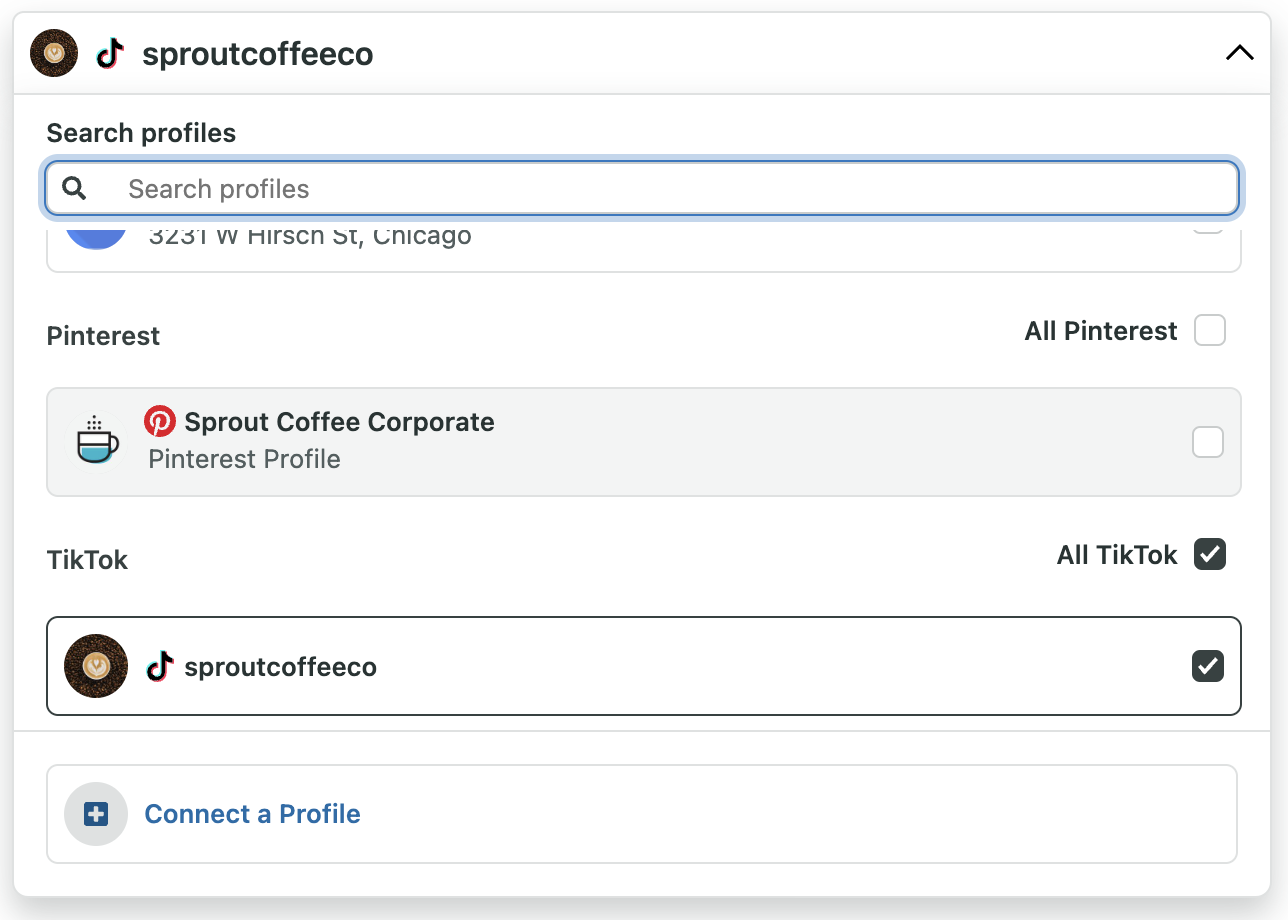
Step 3: Designate specific team members to be your Mobile Publishers in the Sprout Social mobile app
Mobile Publishers are assigned to post content to Instagram and TikTok using Sprout’s mobile app. Sprout’s mobile publishing features create a workflow to schedule your posts in the mobile app. Then, the assigned Mobile Publisher(s) will publish the content to your TikTok account on the time/day you specify.
Remember, your team will need to pick who’s going to publish on mobile before you schedule a post.
There are a few actions to take if you want to appear in the Mobile Publisher list in the compose window:
- Download the Sprout Social app on a mobile device.
- Enable push notifications for the app.
- Enable the Publishing Reminders option in the notification preferences screen of the app.
Once you have a mobile user set up and ready to go, create your post by uploading a video to Sprout via desktop. Then, add the final touches to your post, such as:
- Writing an engaging description or caption–it’s optional to include mentions and hashtags
- Choosing whether to allow comments, duets or stitches
- Designating the Mobile Publisher for your post
- Selecting a day and time for the post to go out
Once you’ve done all the above, click Send or Schedule.
Step 4: Open Sprout on your mobile device to finalize your post
The next step is in the hands of the designated Mobile Publisher for your scheduled post.
Sprout will send a publishing notification to your mobile at the scheduled time. Tap on this notification. Review the content to see if it needs any changes. Then tap Continue to TikTok to move forward with publishing.
You’ll then see a list of publishing reminders to review. If all looks good, simply tap Ok, I’m ready to post.
For iOS users, your uploaded video will download to your device and your caption will be saved to your clipboard. After that, the TikTok app will open.
Step 5: Use TikTok to publish your scheduled post
You’re almost there. The mobile publishing process will be completed within the TikTok app.
If you use an Android device, your video will automatically load when TikTok opens.
If you’re an iOS user, select the downloaded video from your camera roll. You’ll also have the option to polish up the video by adding any effects and options before tapping Next. After that, paste the prepared caption from your clipboard.
At this point, do a final review for any typos or errors. Are you happy with how your post appears? If so, tap Post to publish your video. You’re all done.
Step 6: Review your scheduled content on the go
Everyone makes mistakes (yes, even the most seasoned social media marketers). It’s easy to schedule posts at the wrong time of day or on a completely different platform than you intended.
With the Sprout mobile app, it’s easy to check and confirm that your scheduled posts and recently published posts are perfect while on the go. From misspelled words to overlapping postings, you can catch the little things before–or quickly after–they go live.
Sprout also makes it possible to add edits on the fly. This is especially helpful since TikTok’s Video Scheduler doesn’t allow changes once you’ve scheduled a post for publishing. So be sure to take advantage of this capability to create more time and space in your schedule for more important tasks in your workday.
Curious to see how scheduling TikTok posts on mobile will level up your social media marketing strategy? Sign up for a 30-day free trial of Sprout’s TikTok management tools to try it yourself.
How to schedule TikTok posts using Sprout Social (on desktop)
TikTok’s scheduler is great for a quick set-it-and-forget-it post. But chances are, TikTok is one of many channels you’re managing.
Using a dedicated social media publishing tool like Sprout Social empowers you to see and schedule all of your posts in one unified place.
And we’ve made it easy to schedule TikTok posts, with no limit to how soon or how far in the future you can post your content.
Follow these easy step-by-step instructions to schedule TikTok posts using Sprout’s desktop option.
Step 1: Log into Sprout on your web browser and create your post
Start by logging into Sprout Social in your favorite web browser on your desktop.
To create a post, tap the blue notepad and pencil icon in the top right. Or, click Publishing on the left and click on the day you want to post.
Pro tip: Be sure to get your posting frequency right. Post too little and you risk losing visibility. Post too often and you risk overwhelming your audience. According to the 2025 Sprout Social Index™, consumers don’t want brands to post constantly just for the sake of it. So it’s time to scale back your publishing and post with more intention.
To avoid over-posting or double-posting, schedule posts from the weekly or monthly calendar view. This gives you a high-level look at your upcoming posts across platforms to avoid over-scheduling in a given day or time period.
Step 2: Select the right TikTok account
Agencies, social media managers and creators alike may be balancing multiple TikTok accounts.
With Sprout, you can manage multiple handles in one place.
Once you’re in the New Post window, select the dropdown in the compose box and choose the account you want to publish on. You can also select accounts on other platforms to repurpose your short-form video beyond TikTok.
Step 3: Upload your video content and prep your post
Time for the fun part. Upload the video you want to use. Then, in the compose window, polish and prep your post by:
- Writing an engaging caption
- Including any mentions and hashtags you want to use—these become interactive once your video goes live
- Selecting a frame to use as your thumbnail
- Choosing how your audience can engage with your video—will you allow comments? Duets? Stitches?
In this step, you can also use Sprout’s unique features to keep your social campaigns and team processes organized. For example, set a Message Approval Workflow to streamline team collaboration and communication.
If your post is part of a larger content campaign, select a campaign to keep everything organized. And internally tagging your content makes it easy to categorize posts based on business objectives, post themes and more.
These features streamline collaboration and management for your TikTok marketing campaigns.
Step 4: Choose the best time to post
Scheduling TikTok posts through Sprout enables you to publish at your preferred time. Identifying the best time to post matters, but it can also feel like a mystery.
The best posting times on TikTok for you to engage with users can vary depending on your target audience. Our data suggests that 2 to 5 pm on Wednesday is typically the best time to post. But you also see above-average engagement from Monday through Thursday between noon and 5 pm.
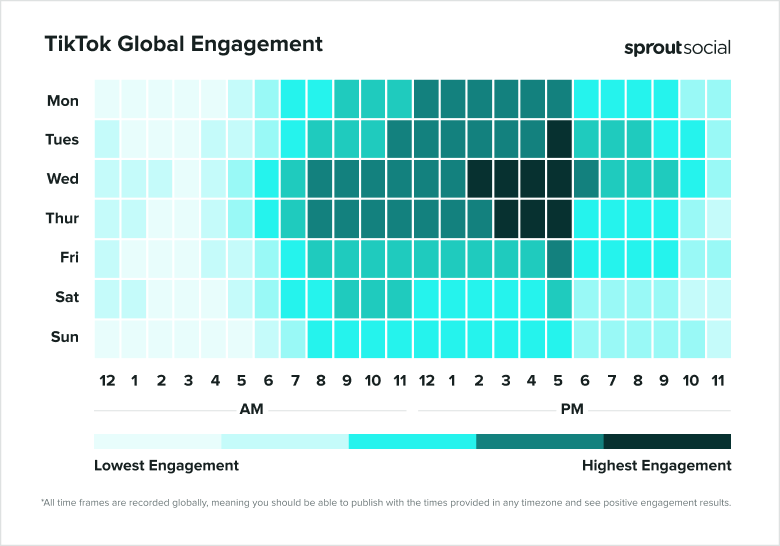
Step 5: Schedule TikTok posts, or save them for later
Once you and your team are feeling good about your post, you have a few options as far as how to schedule:
- Save it, or schedule it, as a draft: Still have pending reviews? Want to keep it as a backup post or calendar placeholder? Saving your content as a draft is a great way to give yourself more editing time.
- Auto-schedule with the queue:Ready to post but don’t have a time in mind? The Sprout Queue is a feature that enables you to choose the best time to publish based on audience activity within a time window you set.
- Submit for approval: It always helps to have a second editing eye on your posts. When you set an Approval Workflow, the “schedule” button will change to a “submit” button, and you can submit your post to the approver for their review.
- Publish immediately: Ready to post right now? Select this option to send your post out into the world right away.
Step 6: Double-check your scheduled content
It’s all too easy to think you scheduled a post for noon, only to realize it was published at midnight.
While TikTok’s Video Scheduler doesn’t let you edit scheduled posts before they go live, Sprout does. Take some time to do a quick typo and time check.
Scheduling in advance gives you plenty of editing room. It also frees up more time to spend on enhancing your strategy.
Best practices for scheduling TikTok posts
You’re almost ready to start scheduling. As you fill your content calendar, think about how your TikTok schedule fits into your larger social strategy.
According to The 2024 Social Media Content Strategy Report, 68% of social users now have a presence on the app. So refining your team and content strategy is essential to maintain relevance and engage your audience.
Here are a few tips and best practices to keep in mind:
1. Maintain a shared, unified content calendar
Managing multiple platforms and posts can result in a lot of moving parts and silos.
Maintain a content calendar to see your scheduled posts across all of your social platforms in one, centralized place. This keeps you organized, helps you track whether you’re over- or under-posting and creates an easy-to-share resource for your team.
Create a calendar of your own, or use Sprout’s social media calendar as an all-in-one content calendar and scheduler.
2. Track your best posting times
The TikTok algorithm is quite different compared to most social media platforms. So you really need to have a TikTok-specific posting strategy if you want your content to be seen on the app.
According to TikTok, recency is a factor in determining which videos show up in the coveted For You Page. Since this is one of the best places to get discovered and grow on the platform, that means you need to post regularly to maintain visibility.
But even as you consistently keep your feed fresh with creative TikTok video ideas, timing is of the essence. You need to post at a time when your audience is most likely to see your post and engage with it. Otherwise, it stands a risk of disappearing in a sea of new and engaging posts from other accounts.
Use our findings on the best times to post as a baseline to test different post timings. You can also enrich the data with the most active times data in your native TikTok analytics.
Then track the engagement patterns for different post timings to see what works. Use Sprout’s TikTok analytics dashboard to identify your top posts. See if there’s a common pattern in post timings across these posts. This gives you an idea of which timings work best to engage your TikTok audience.
Your best posting times might be at odd, outside-of-working-hours—all the more reason to schedule your content ahead of time.
3. Set a smooth approval process for you and your team
Whether you’re a solo social media manager or part of a team, having another pair of eyes is always helpful.
Define a structured review process for your TikTok content (and all your social media content). This helps maintain quality control while limiting the number of cooks in the kitchen.
Sprout makes this easy by providing you with built-in, customizable Message Approval Workflows. Set up an approval workflow that works for TikTok posts to streamline the approval and collaboration process.
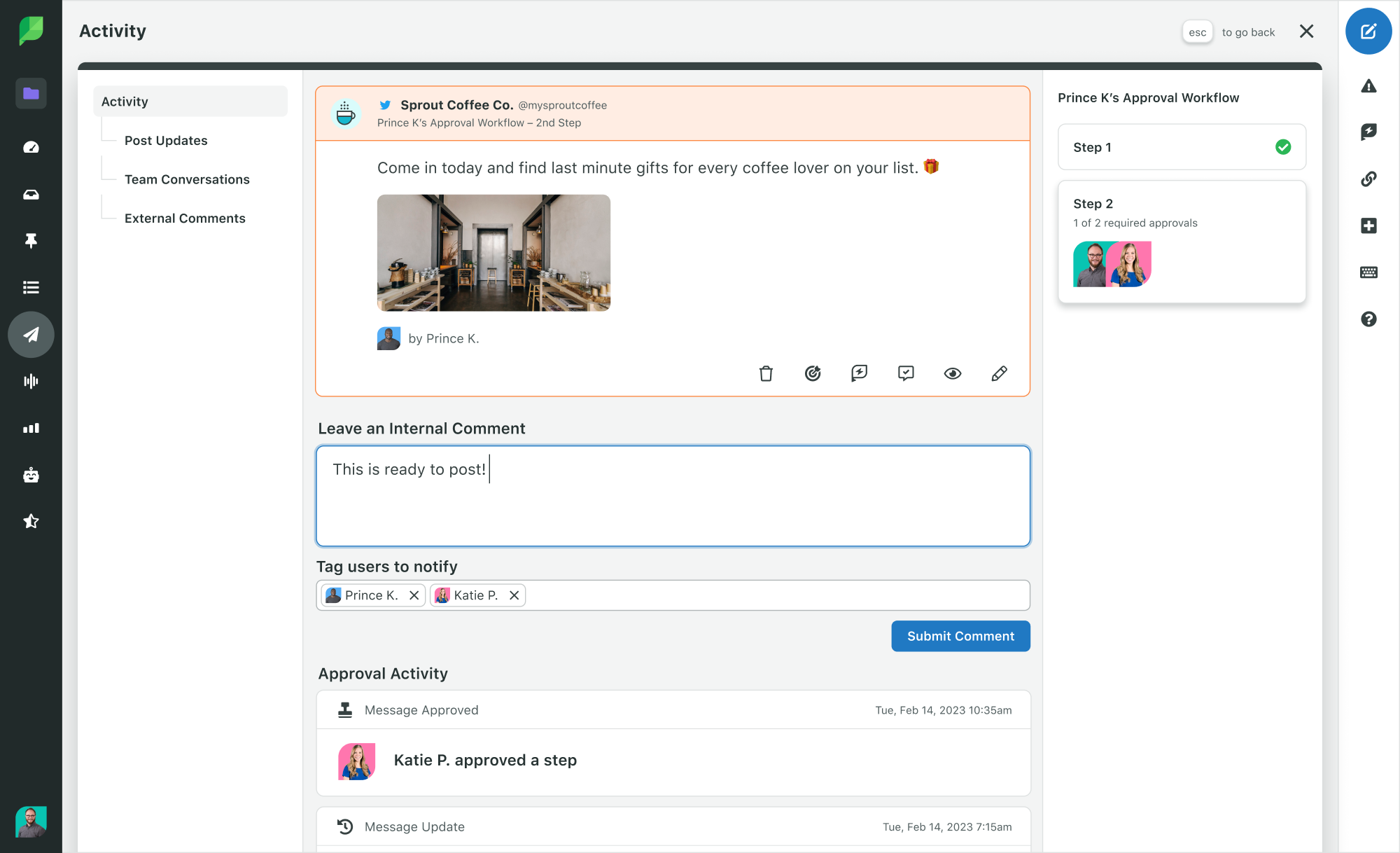
4. Measure the success of your profile and posts
A powerful TikTok marketing strategy is all about making constant improvements. For that, you need data on how your posts and posting times are performing.
Keep a close eye on your TikTok analytics to see what you’re doing right and where you need improvement. Don’t be afraid to experiment and test until you find out what works for you.
With Sprout, analyze how your TikTok profile and content are performing—on its own, and compared to your other social profiles. Use the Cross-Network Reports to turn the metrics that matter most into insights that can fuel your strategy. And fine-tune your efforts to build a deeper connection with your audience.
Analyze your TikTok performance over time—not just over days or weeks. This will give you deeper insights to make more informed decisions and optimize your strategy. If you are a creator beginning to see a lot of success with TikTok you may be in a position to earn money from your account.
While TikTok only offers 60 days of data, Sprout doesn’t limit your TikTok data after you’ve connected your platform. Meaning you can analyze your profile’s growth and success quarter over quarter, year over year.
5. Engage with your audience often
Once your posts are live, remember to regularly engage with your audience in TikTok comments.
After all, it’s called “social” media for a reason. Engaging with your audience strengthens your connection with them and shows you’re listening.
Engaging with your audience is crucial across platforms. Streamline this process by using a tool like Sprout’s Smart Inbox to keep up with comments across TikTok, Instagram and more—all in one place.
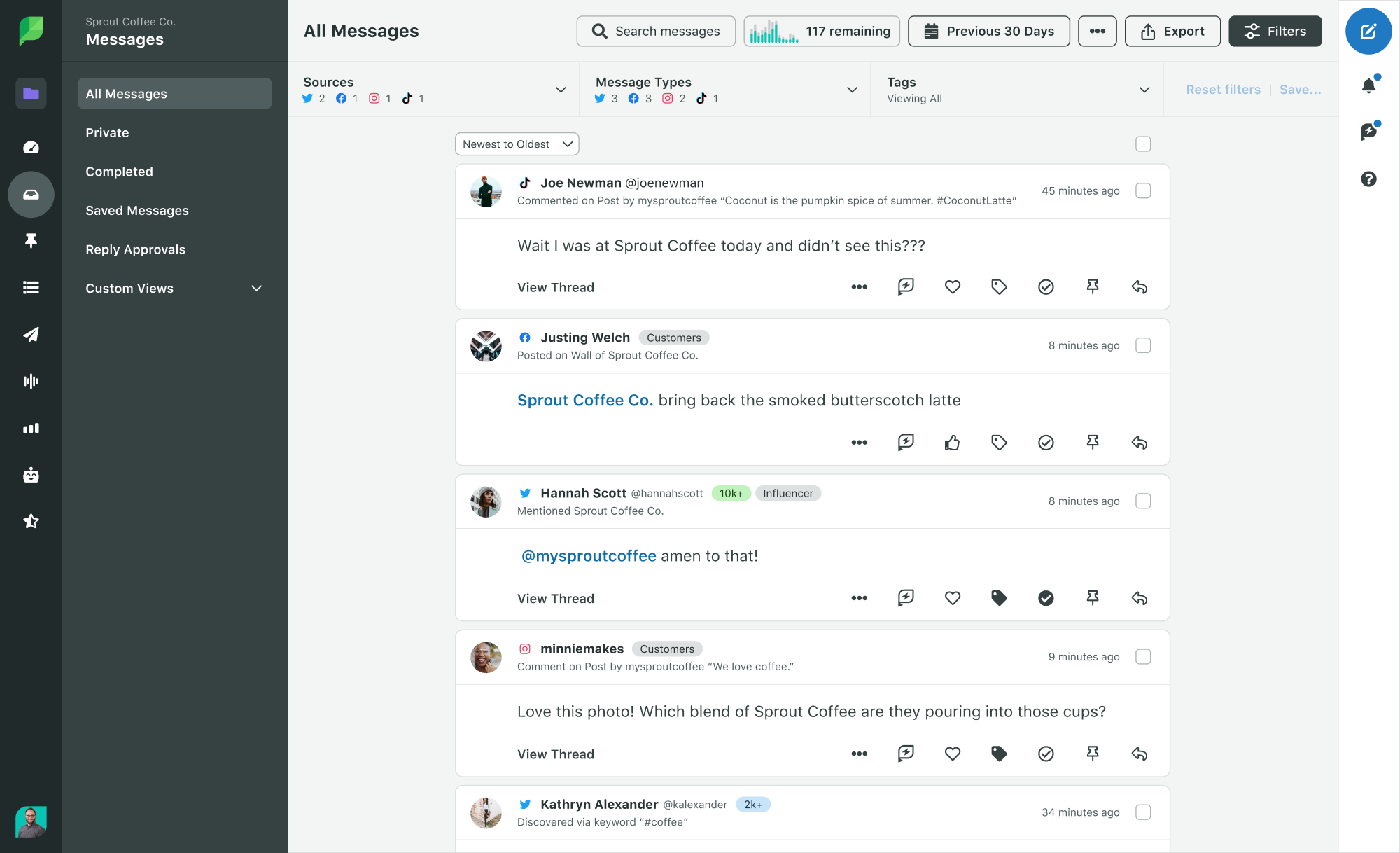
Lighten the load and schedule your TikTok posts now
Scheduling your TikTok content ahead of time ensures your content and publishing are “always on.” At the same time, it gives you the freedom to disconnect and sign off.
A powerful platform like Sprout helps you streamline the TikTok scheduling process. It also provides you with advanced insights and tools to power other aspects of your TikTok strategy.
Try Sprout free for 30 days to see how it can enrich your TikTok marketing efforts.
The post Schedule TikTok posts from mobile and desktop appeared first on Sprout Social.
from Sprout Social https://ift.tt/qZN2B1Y
via IFTTT
